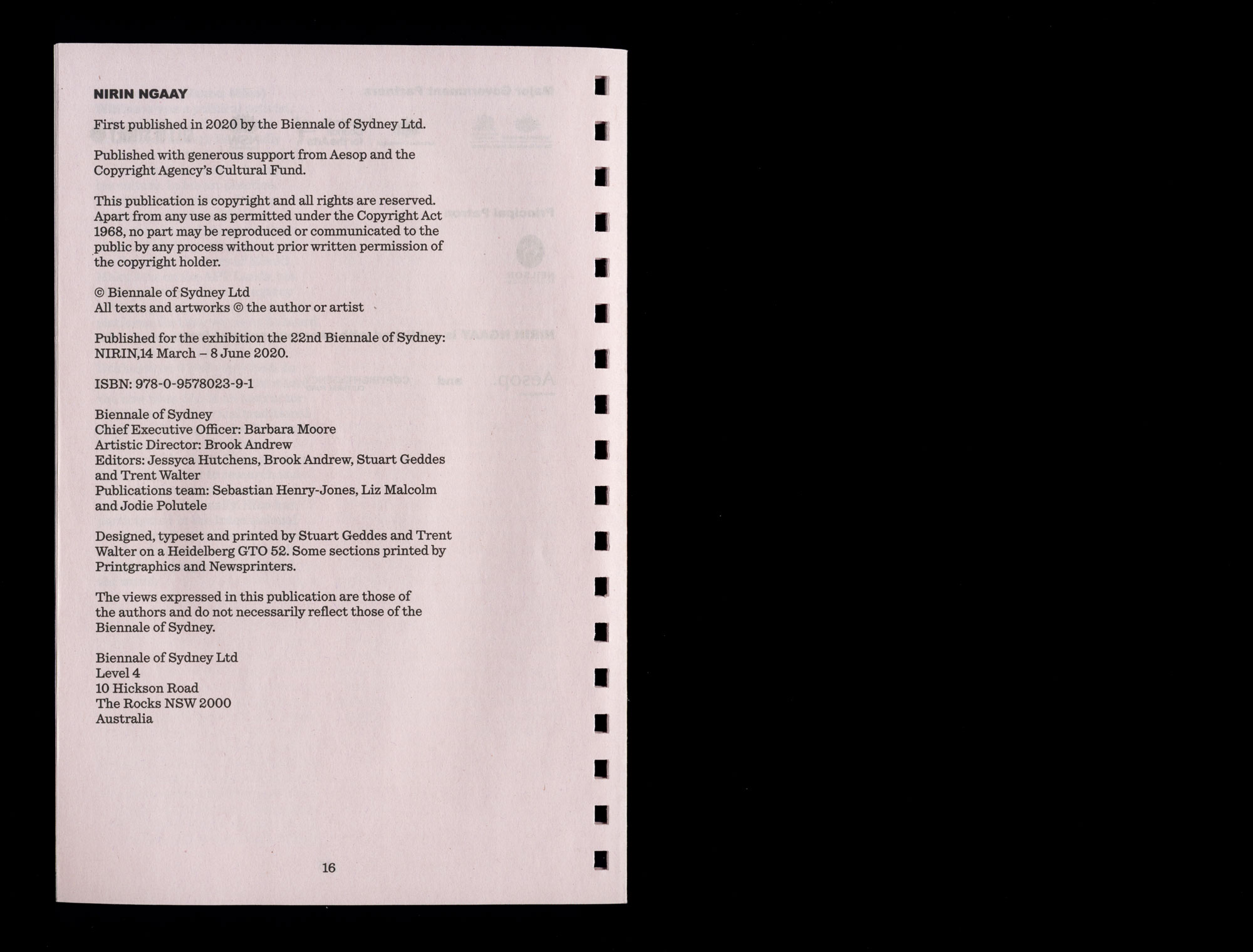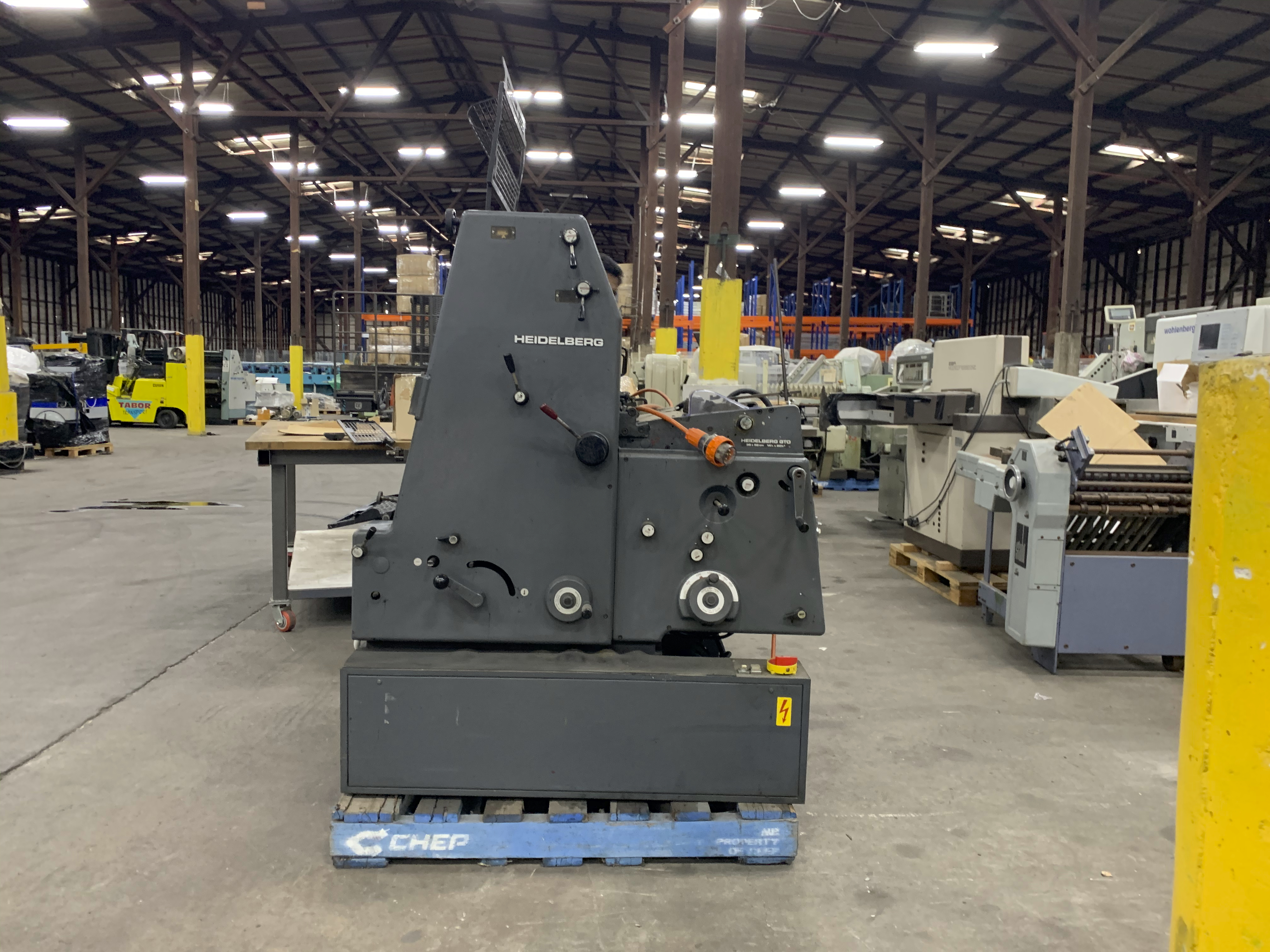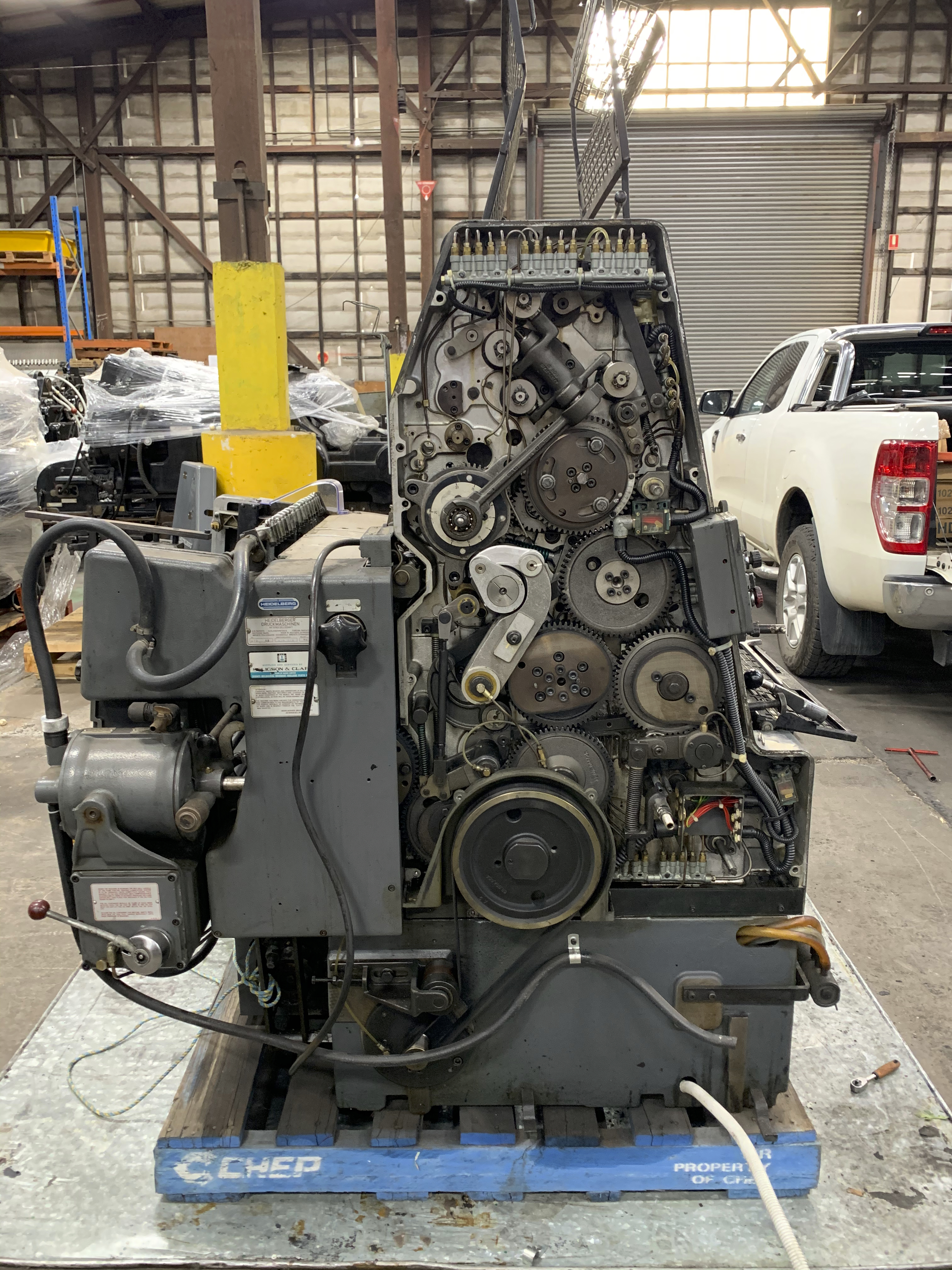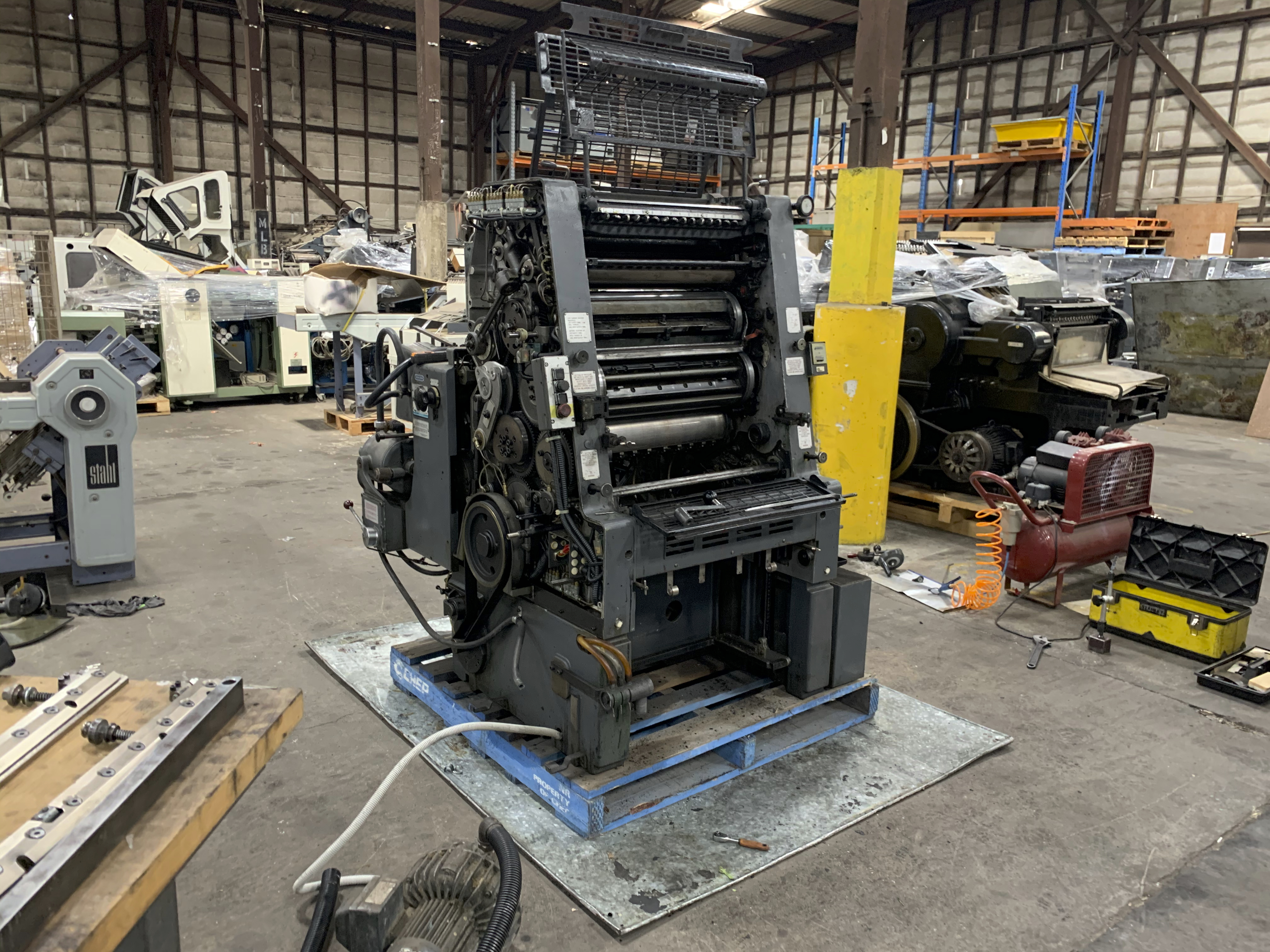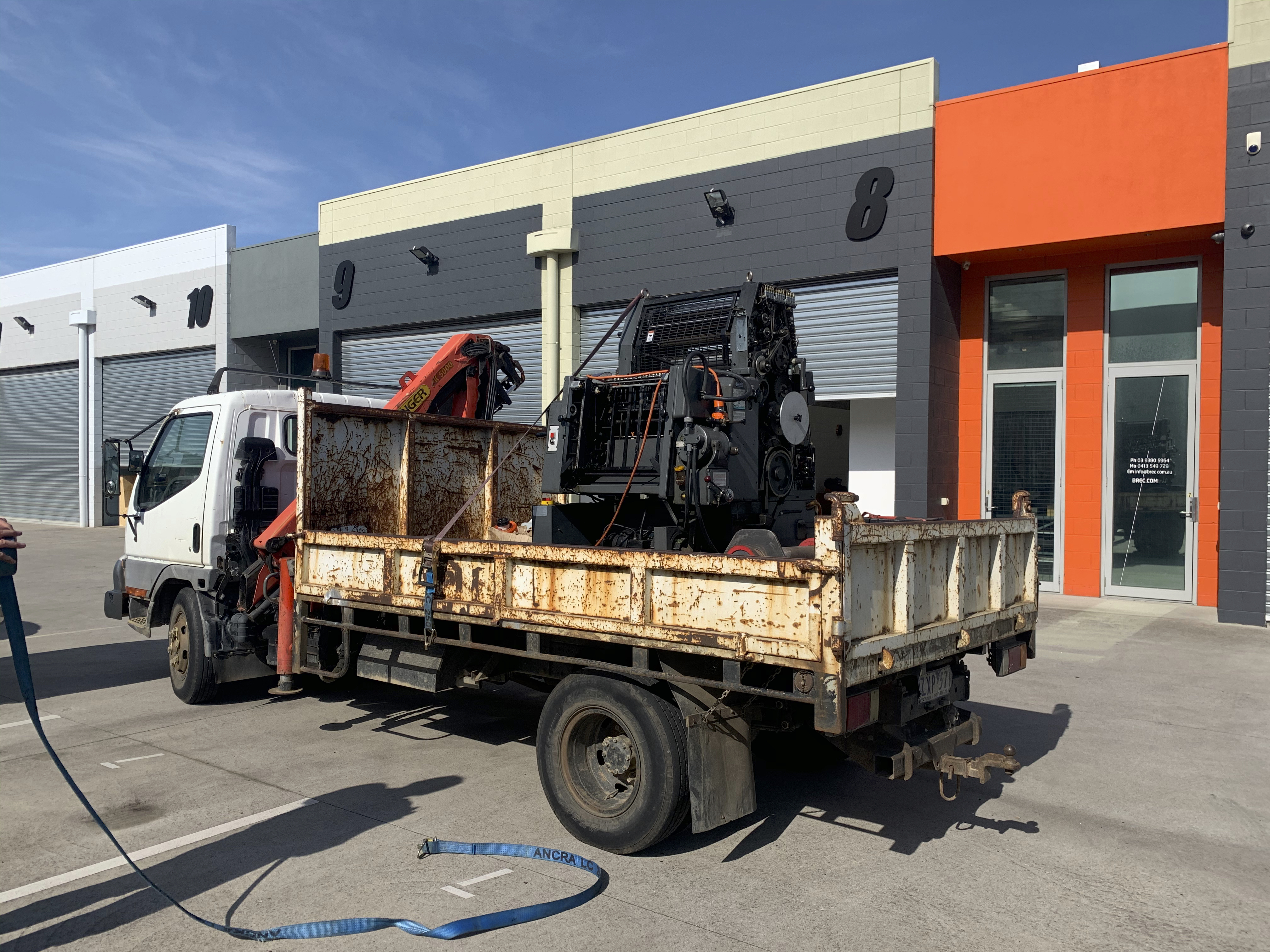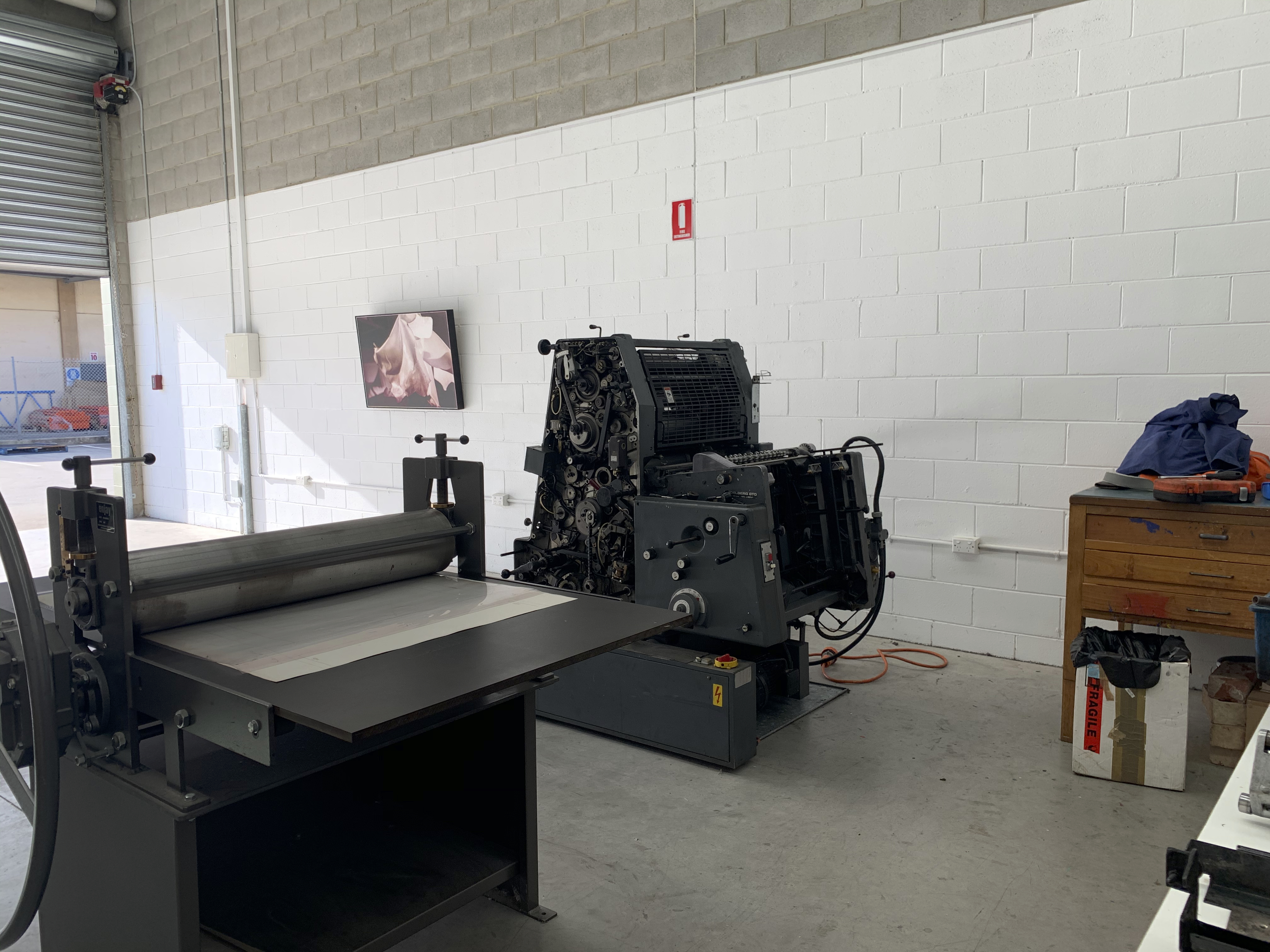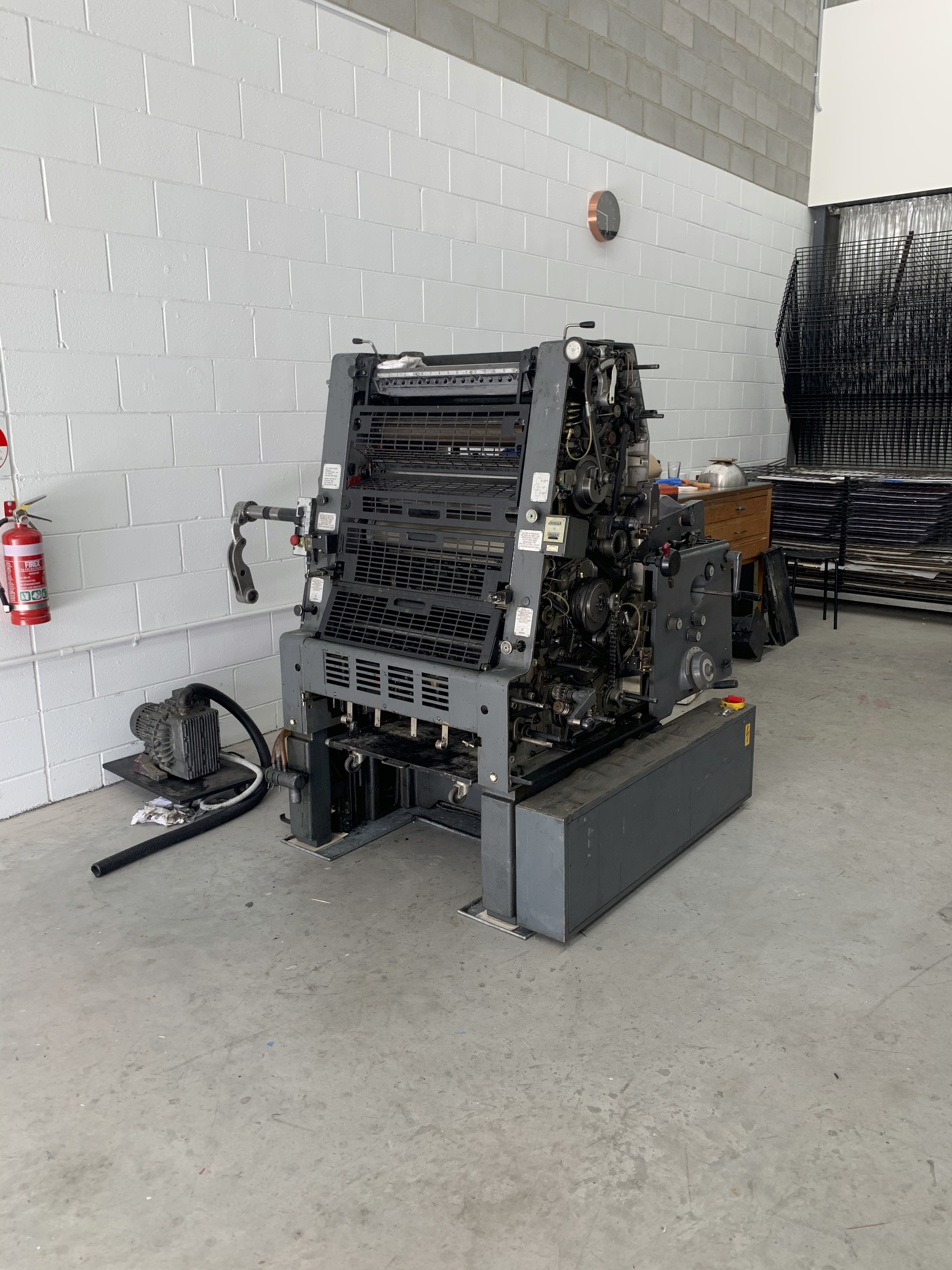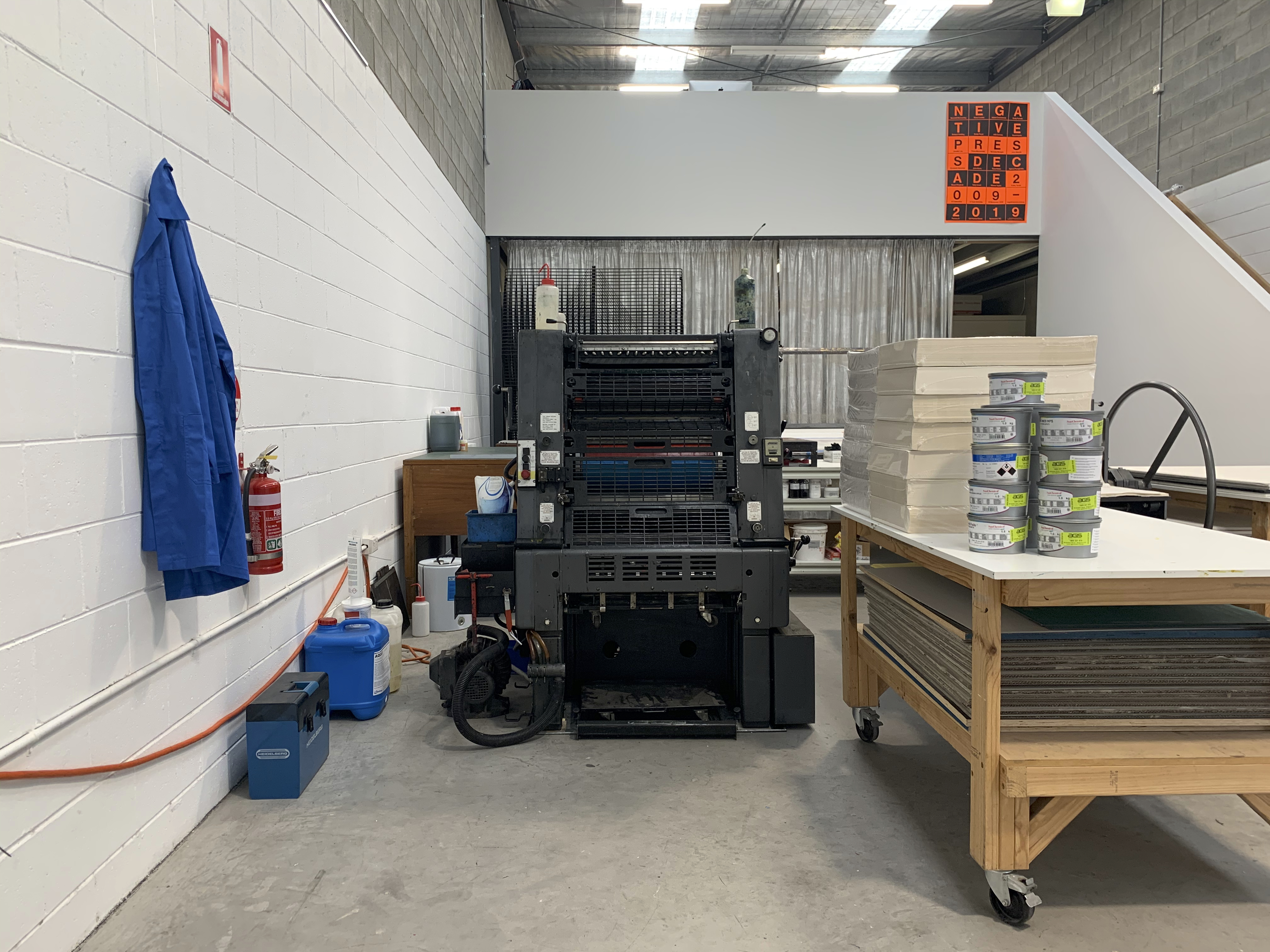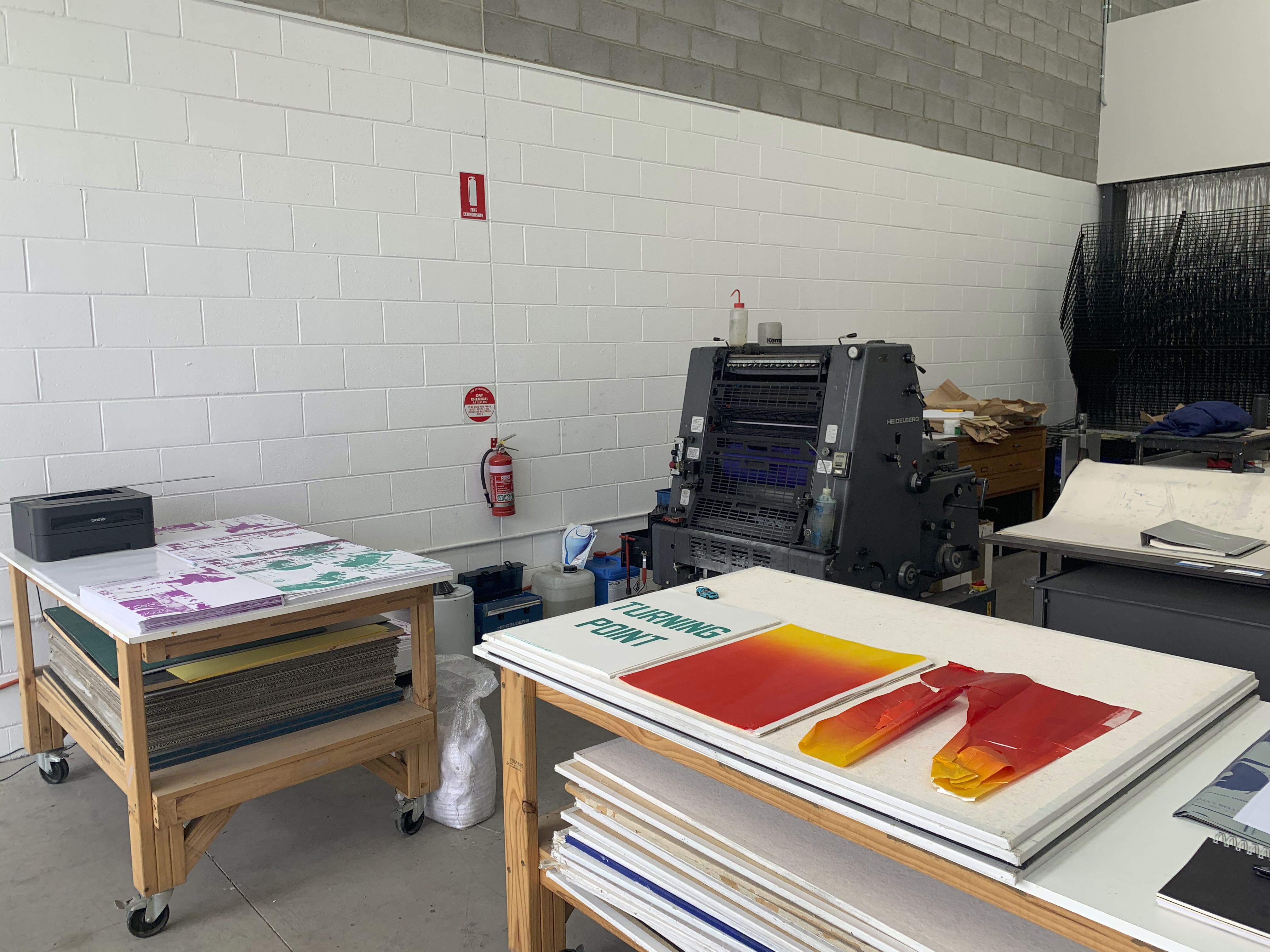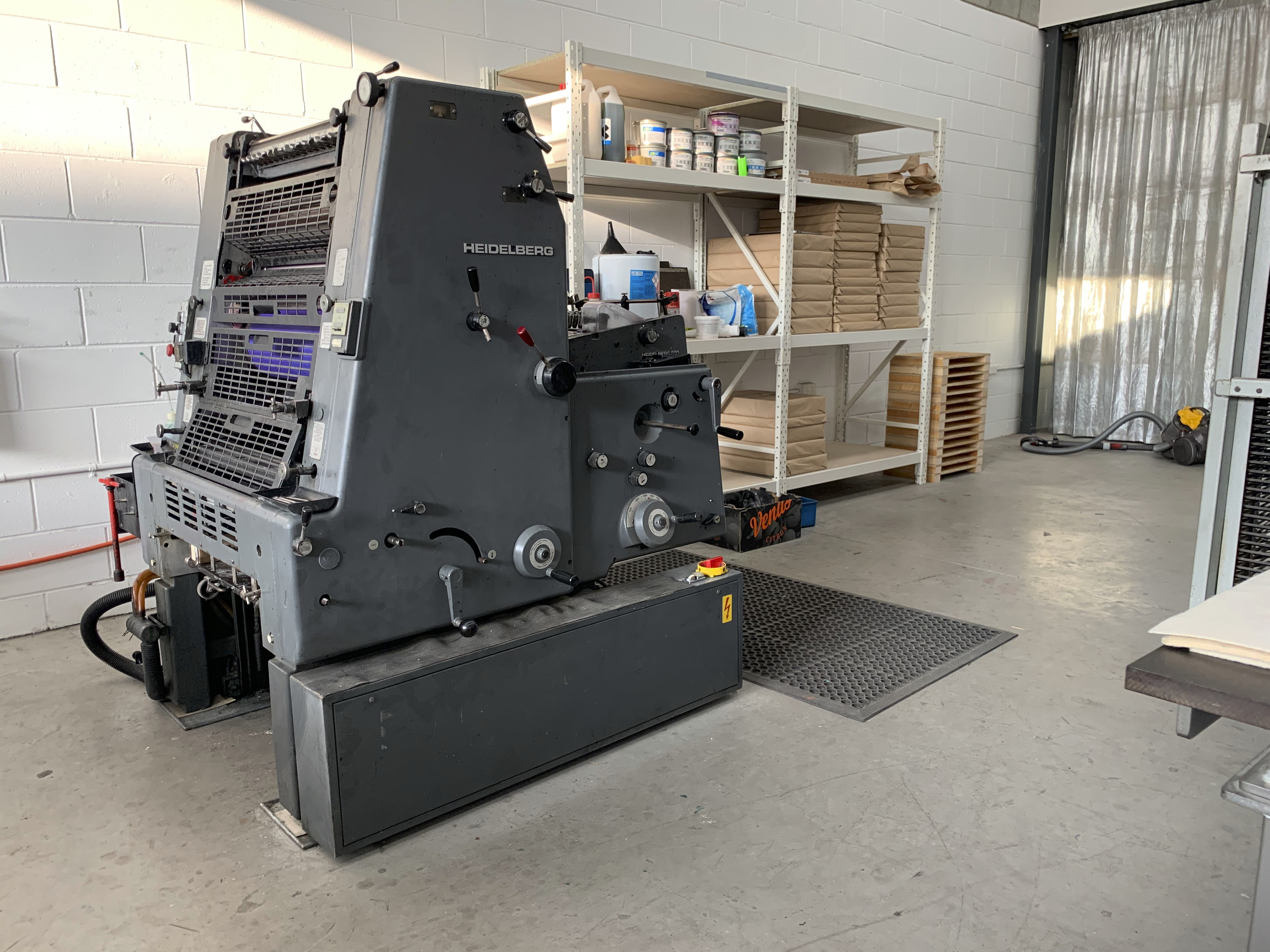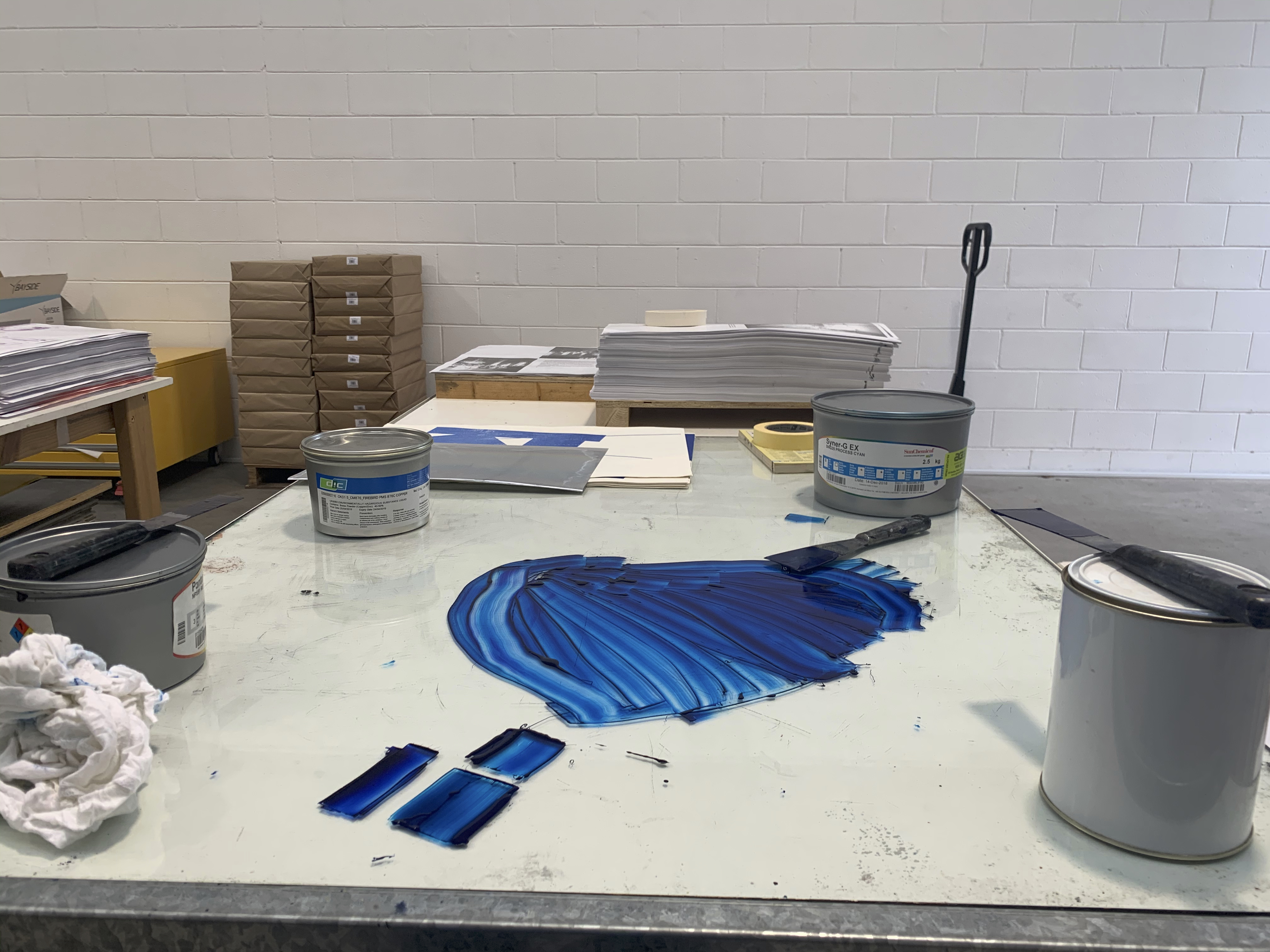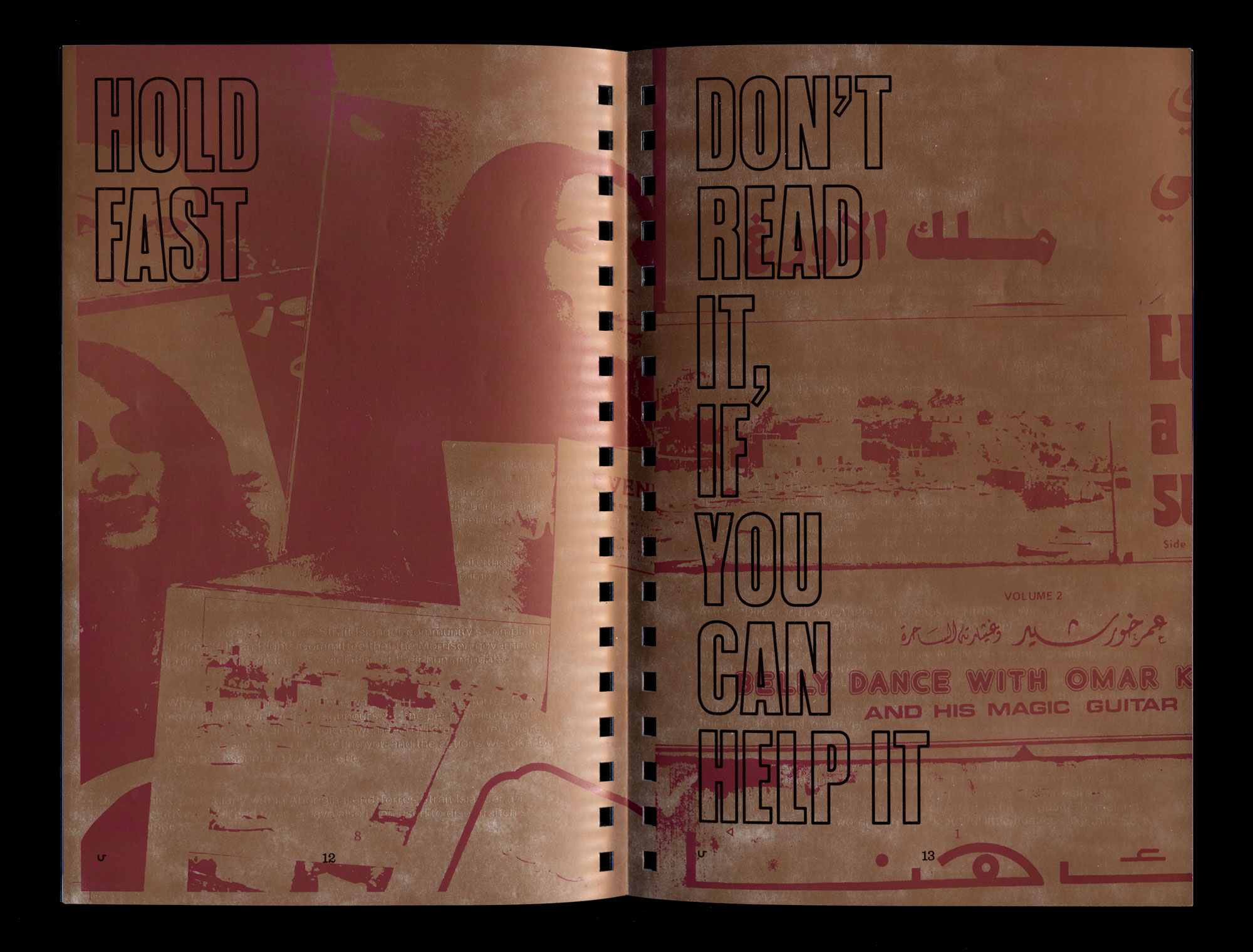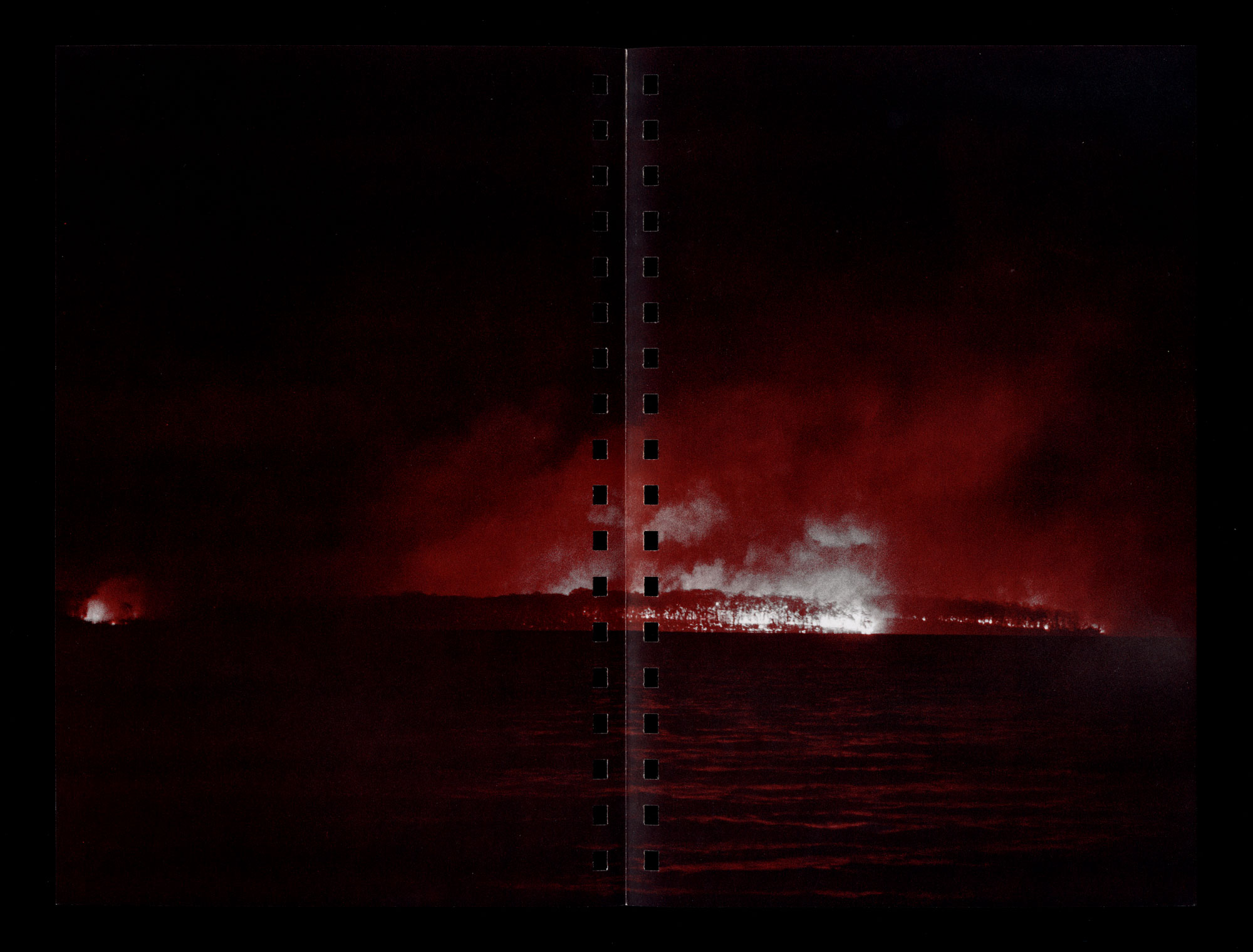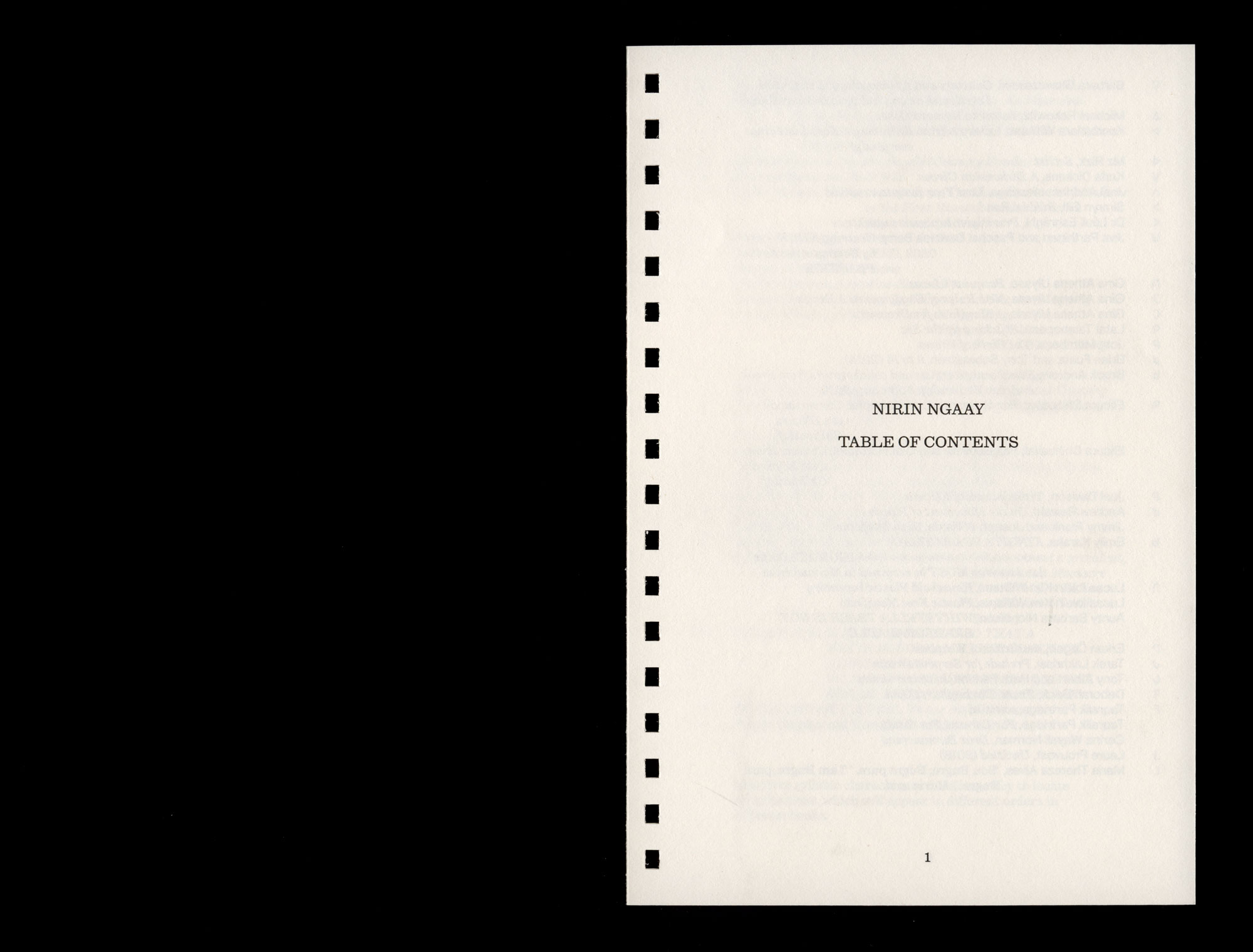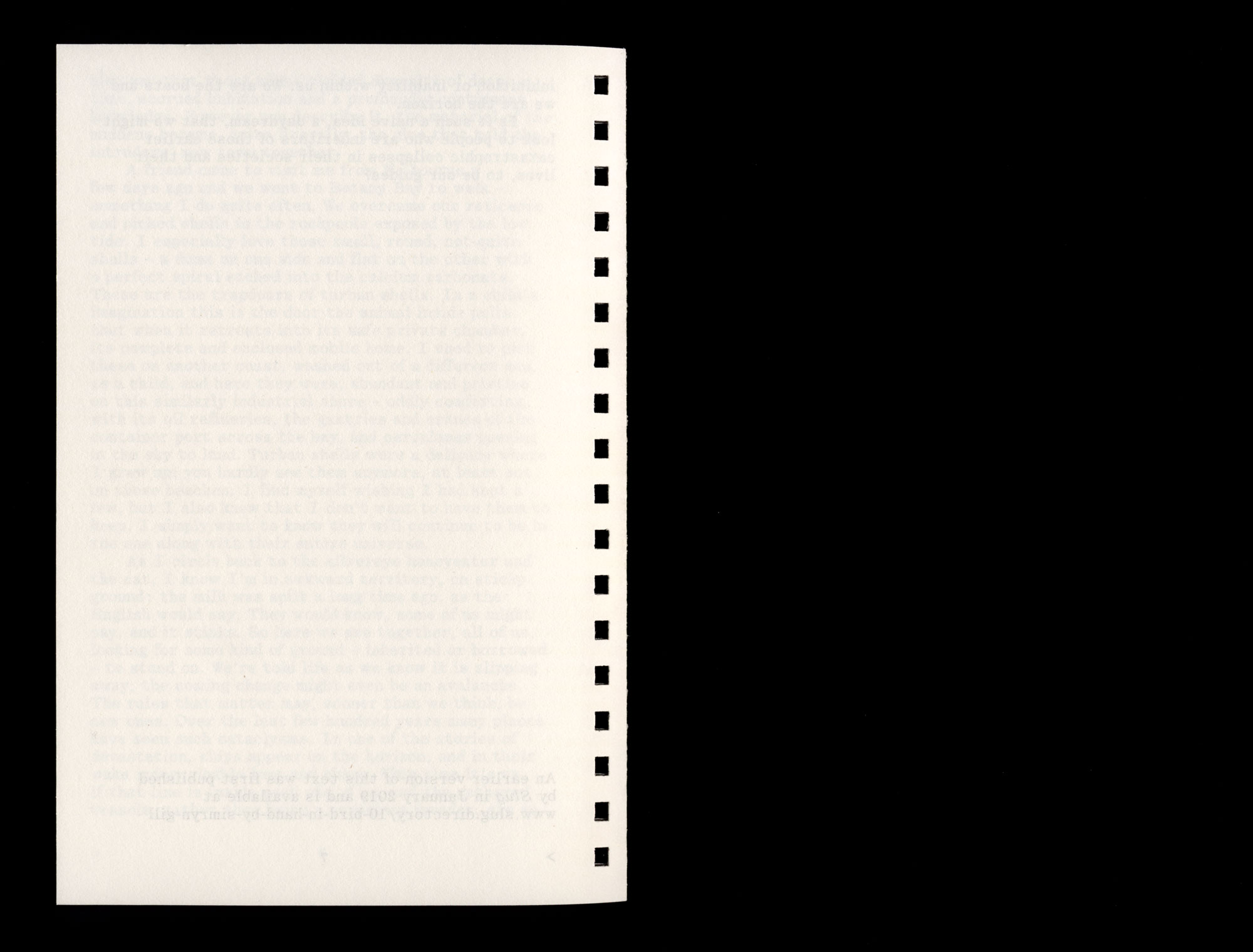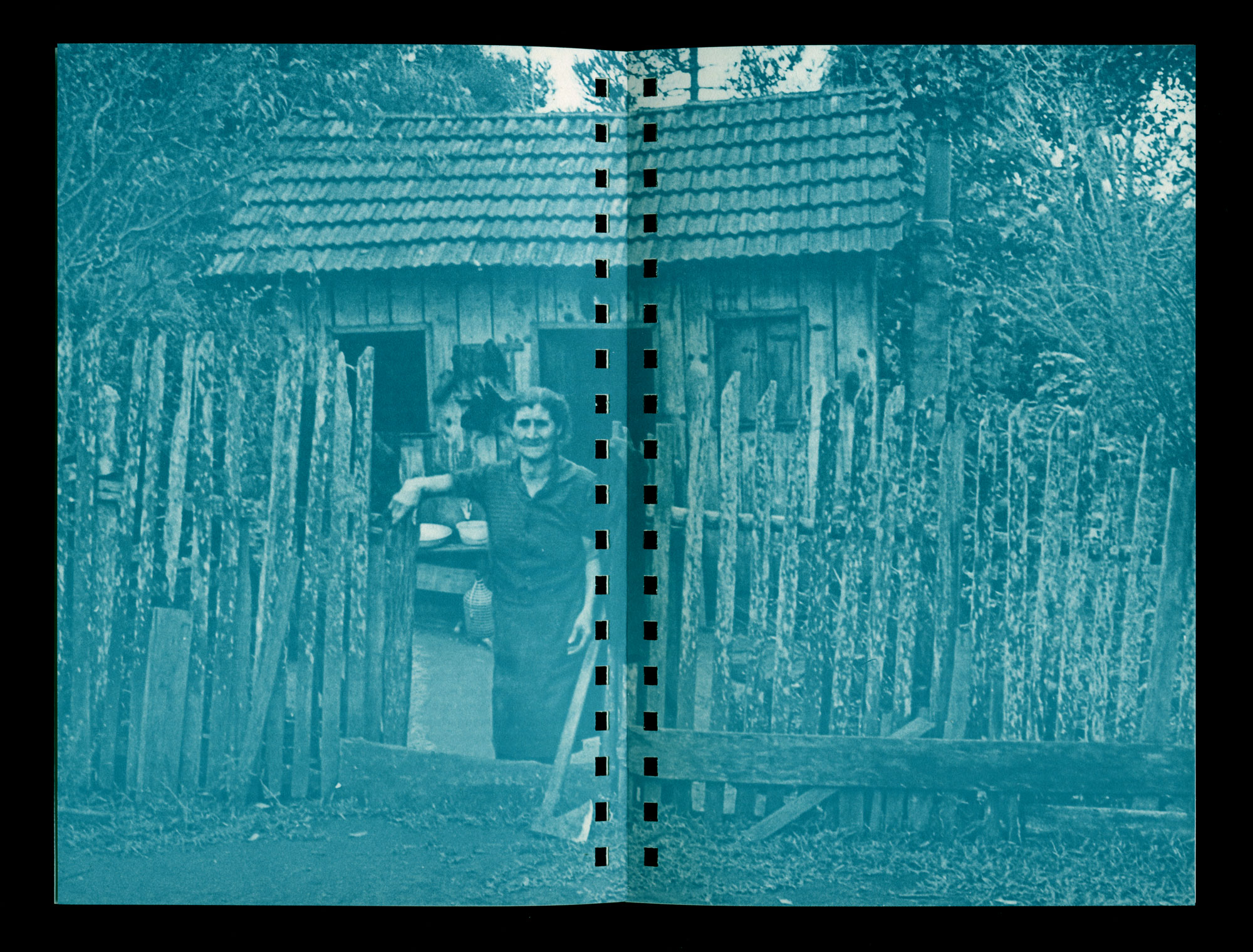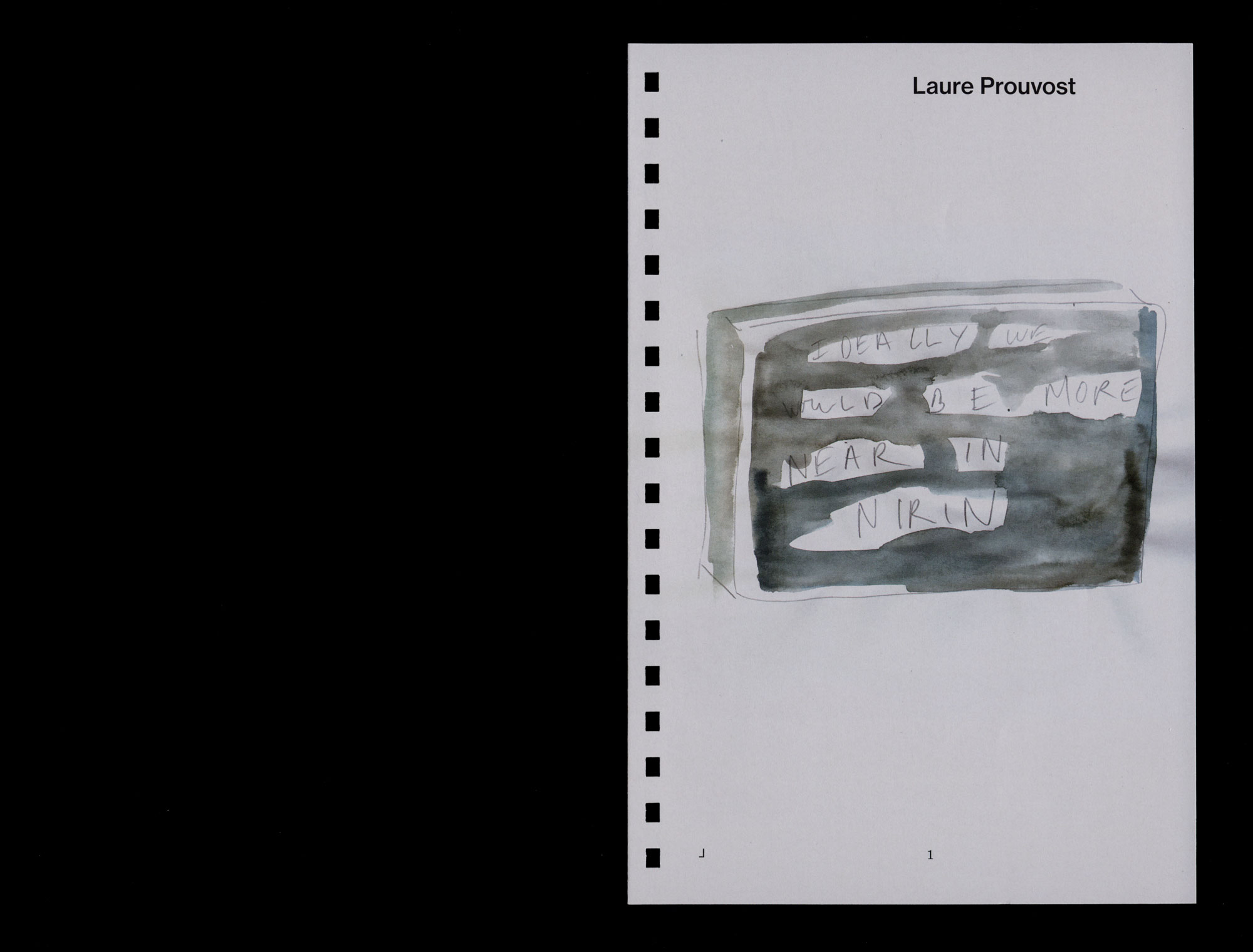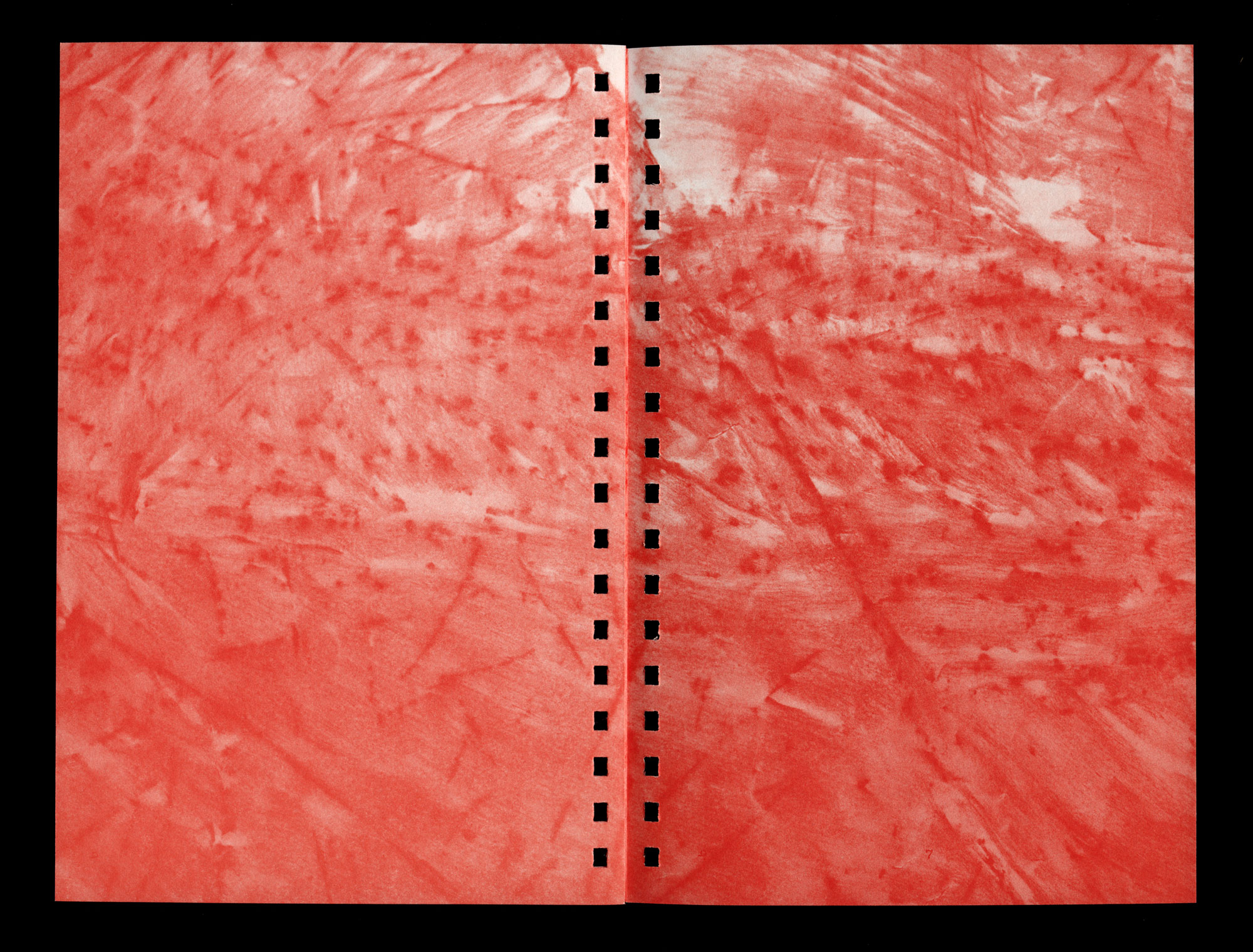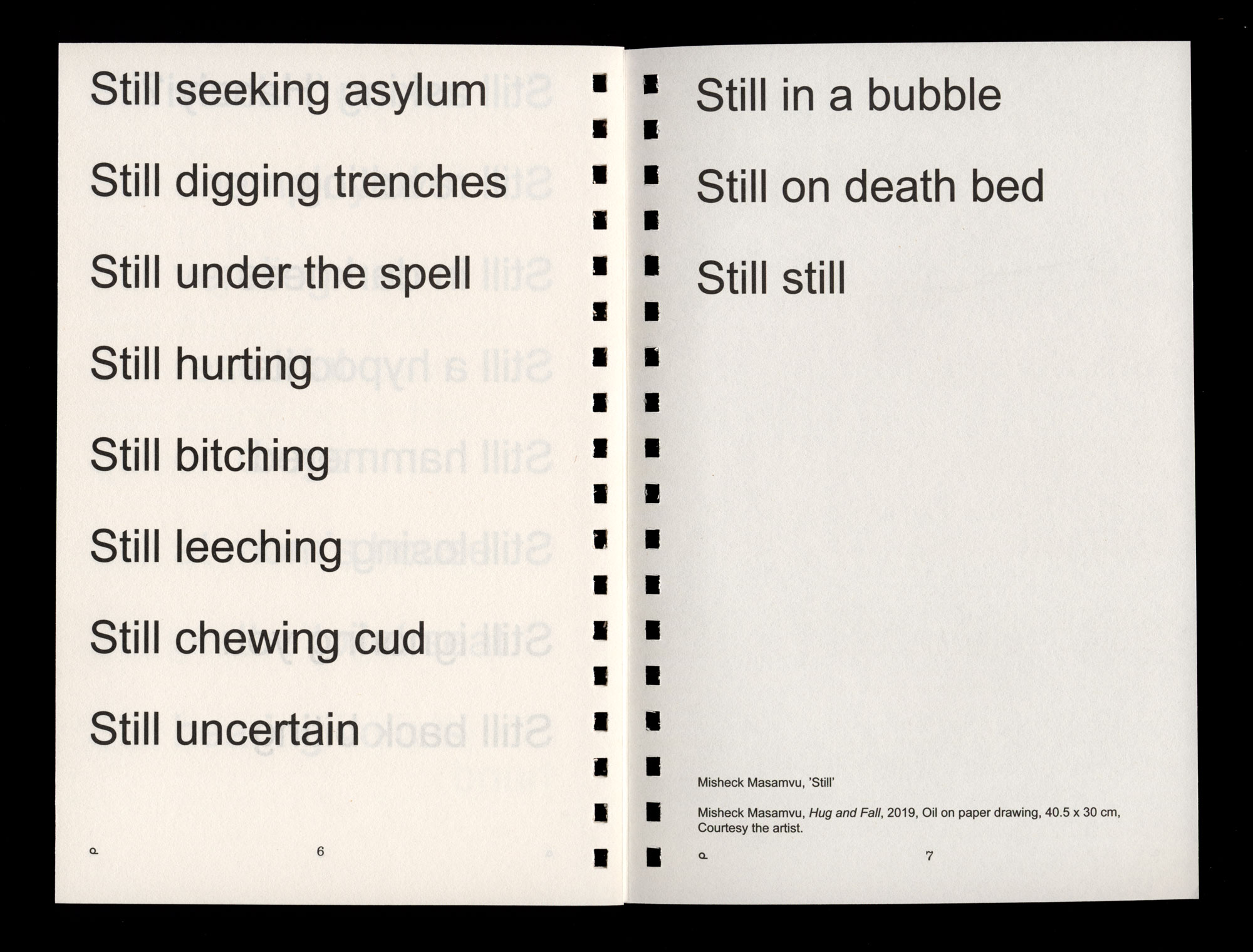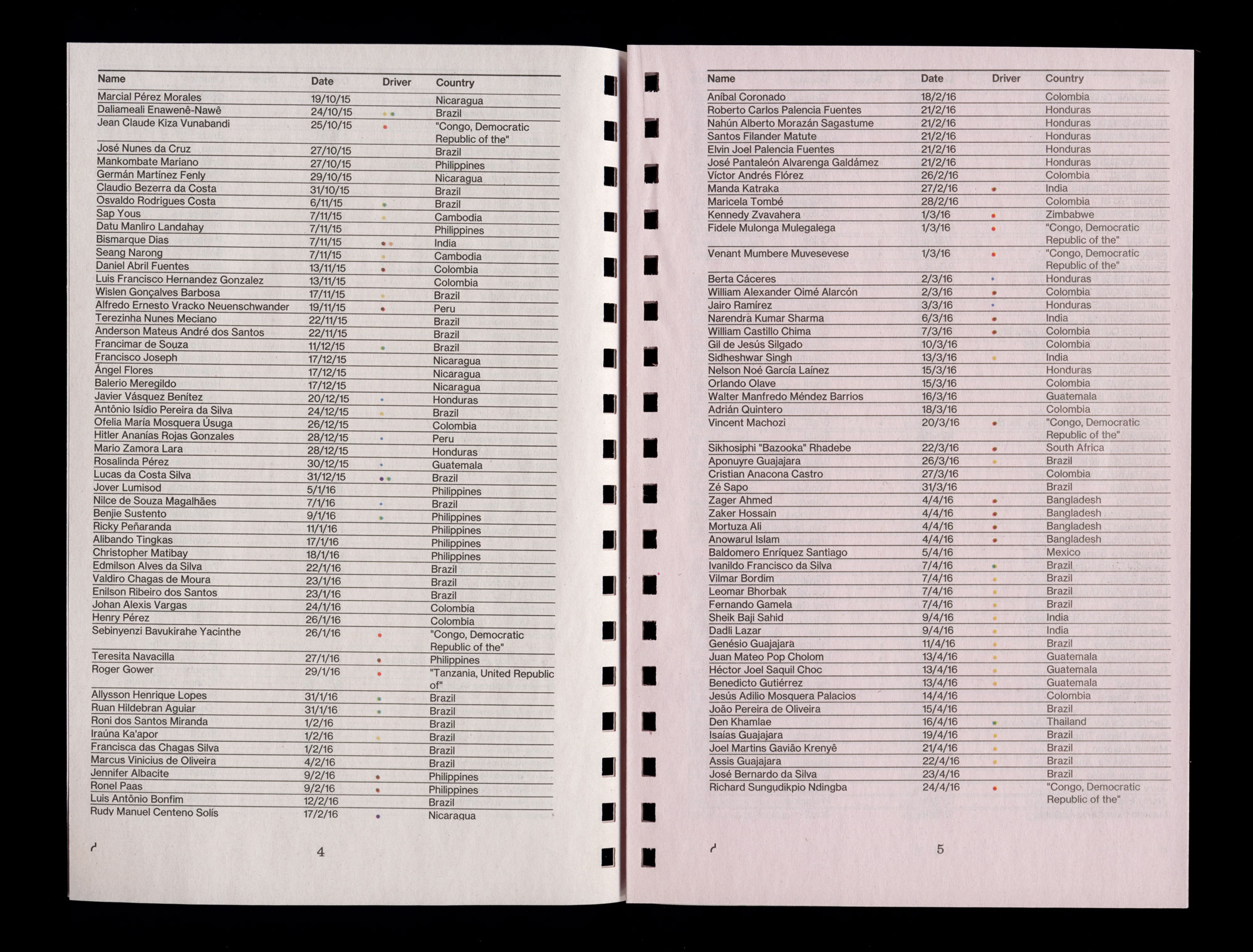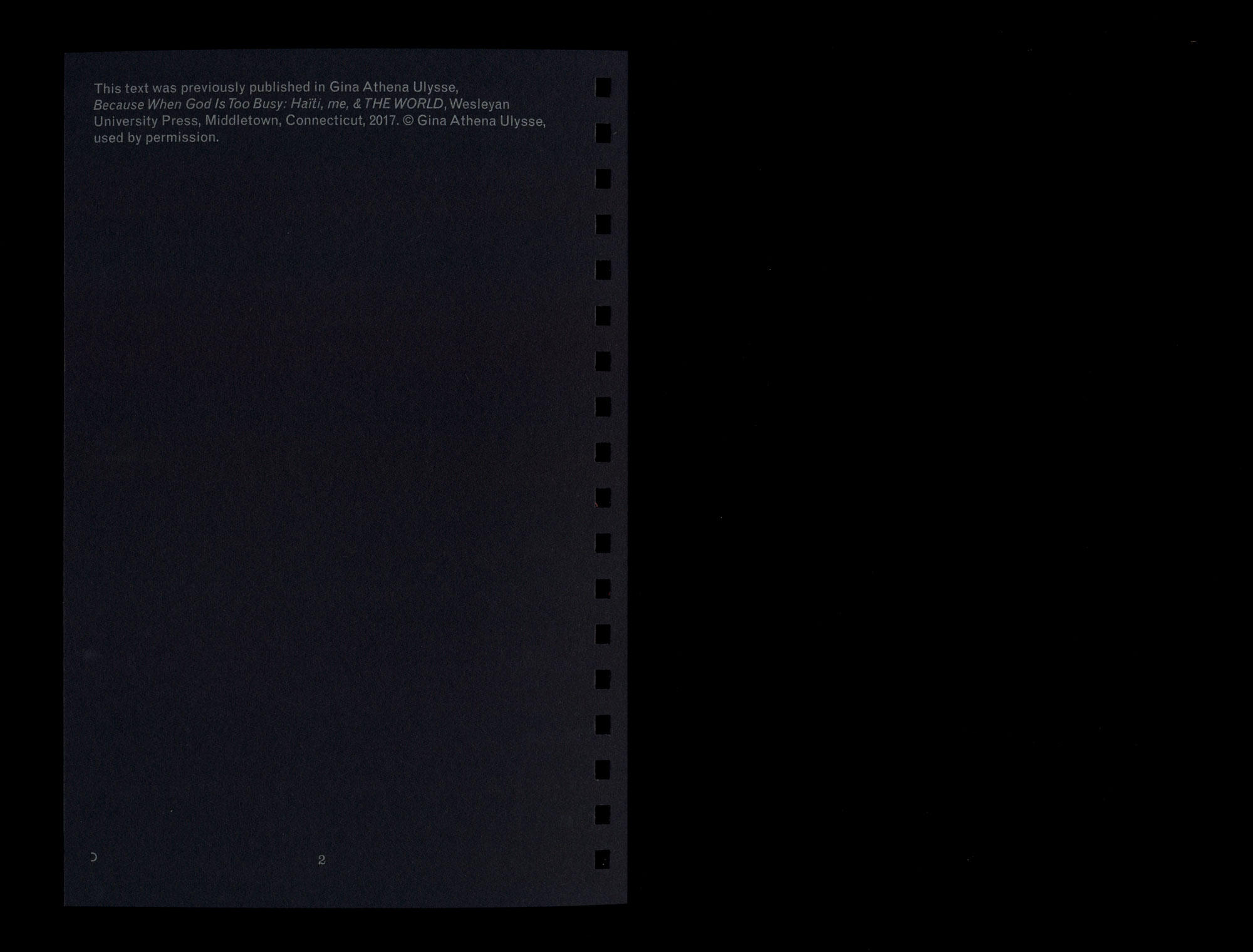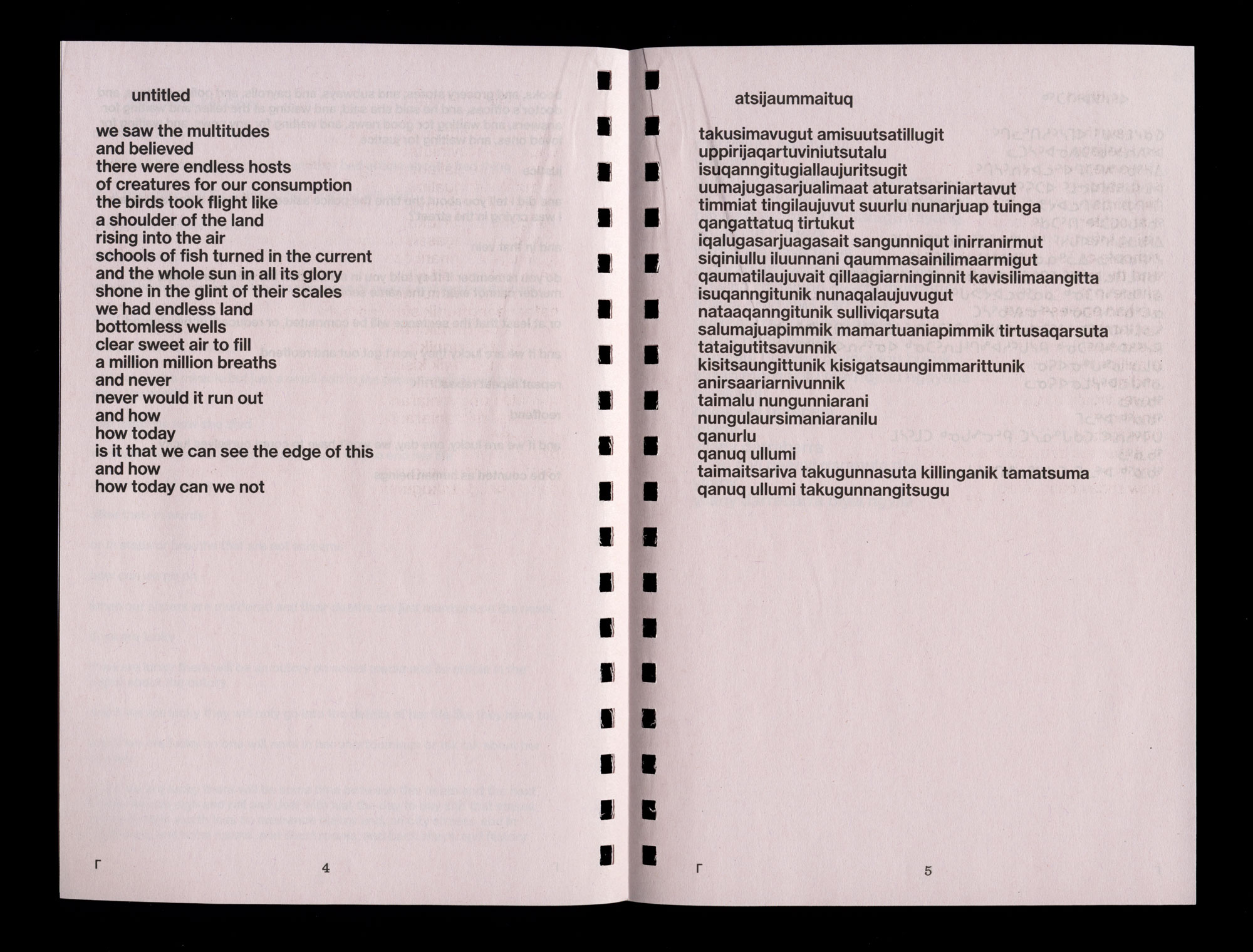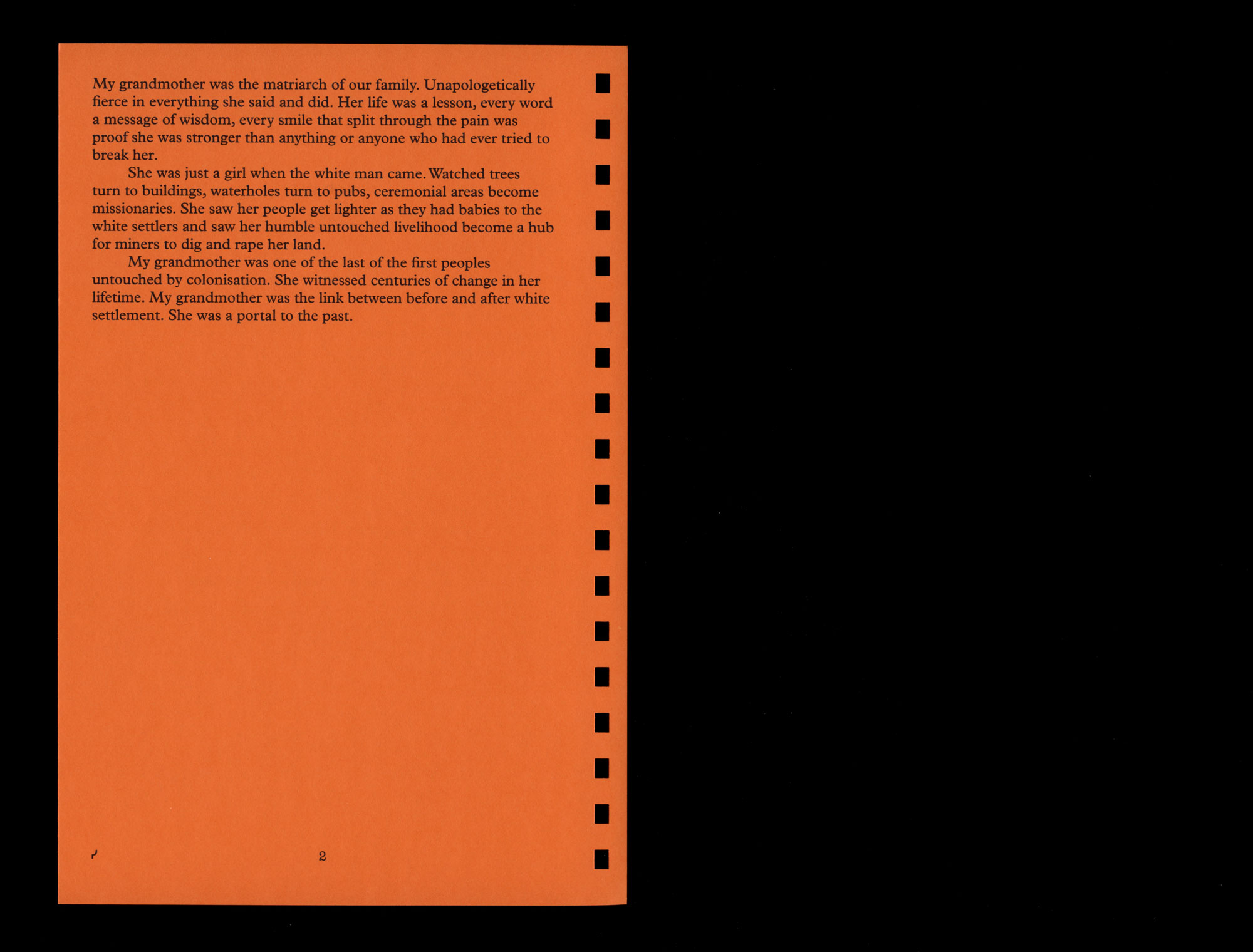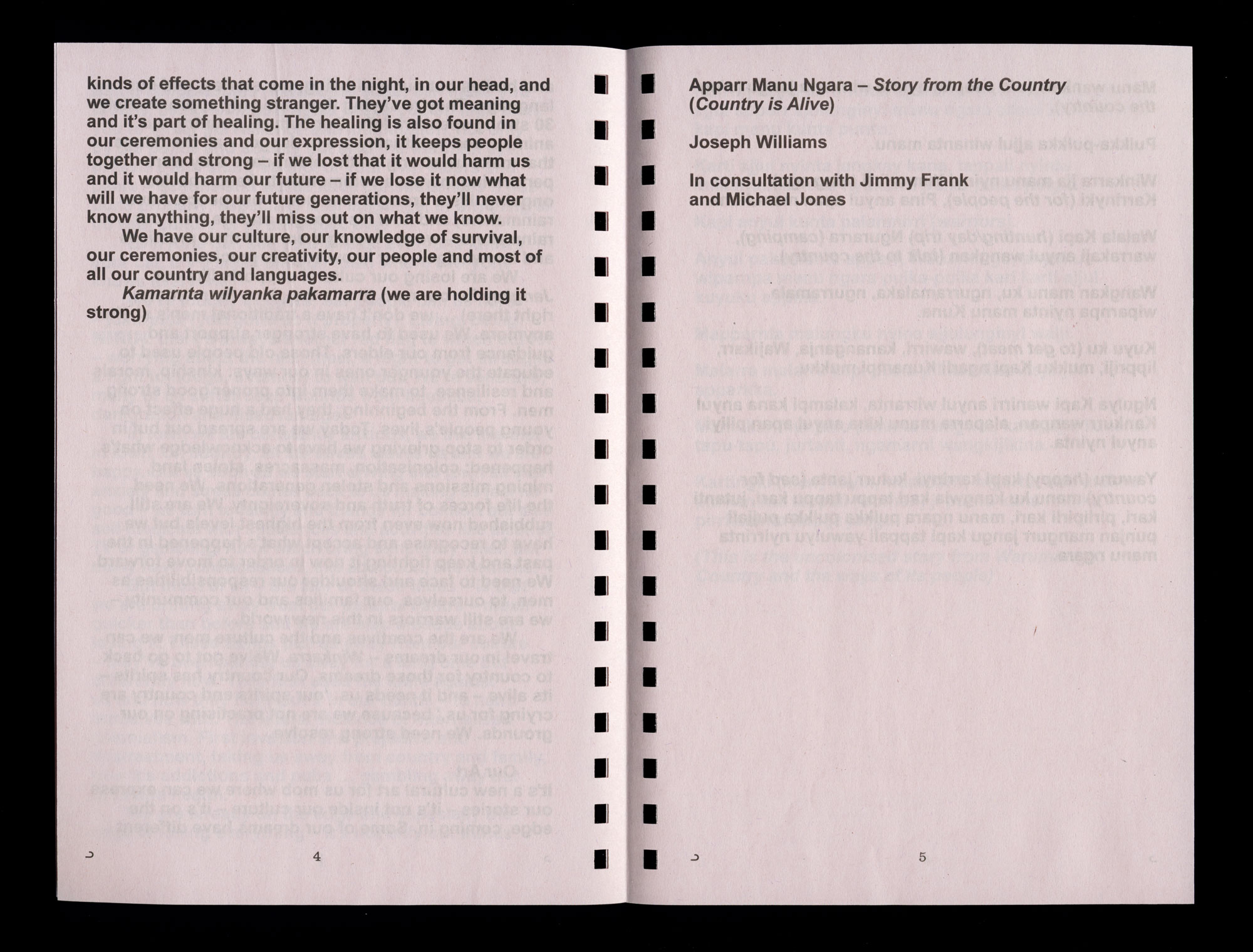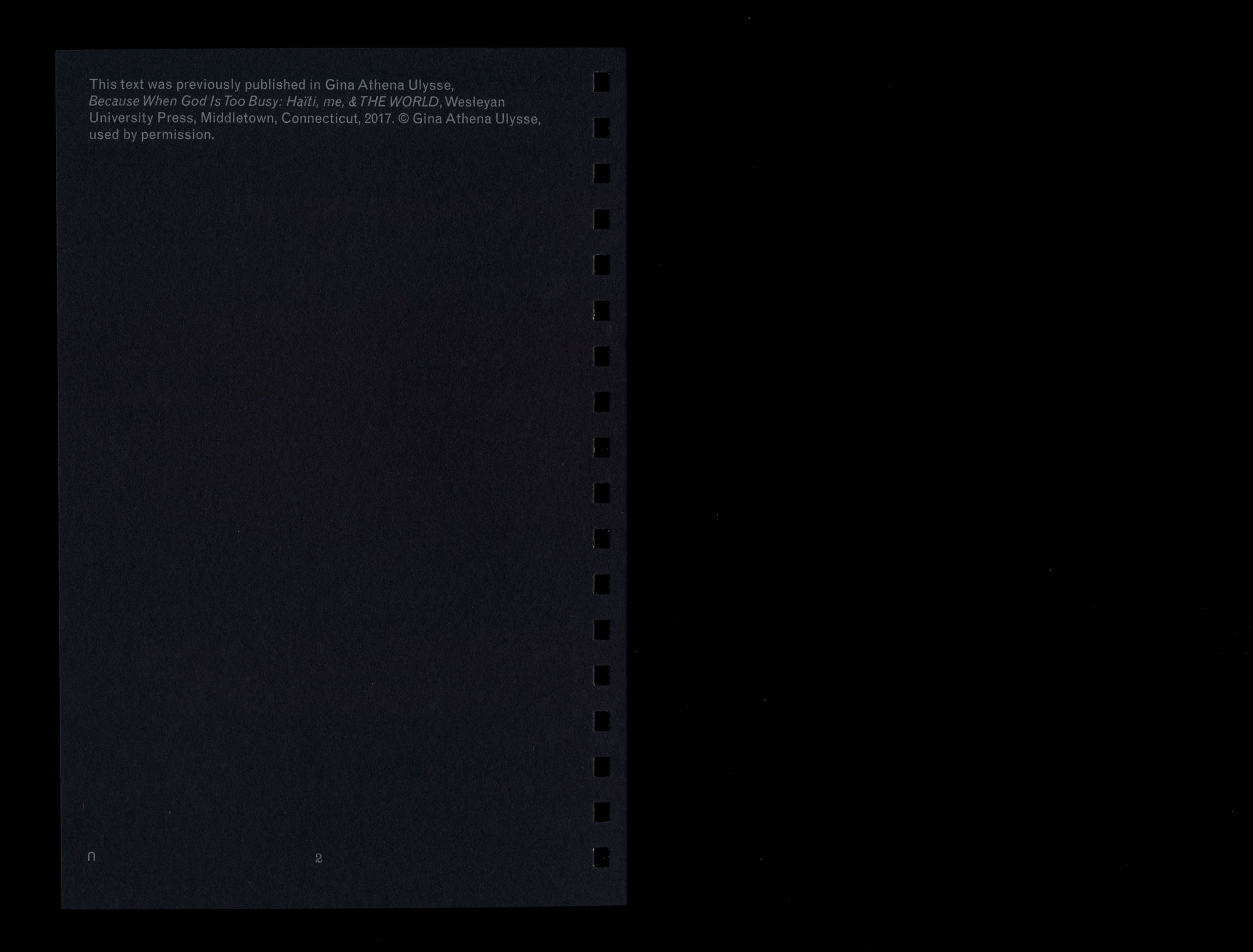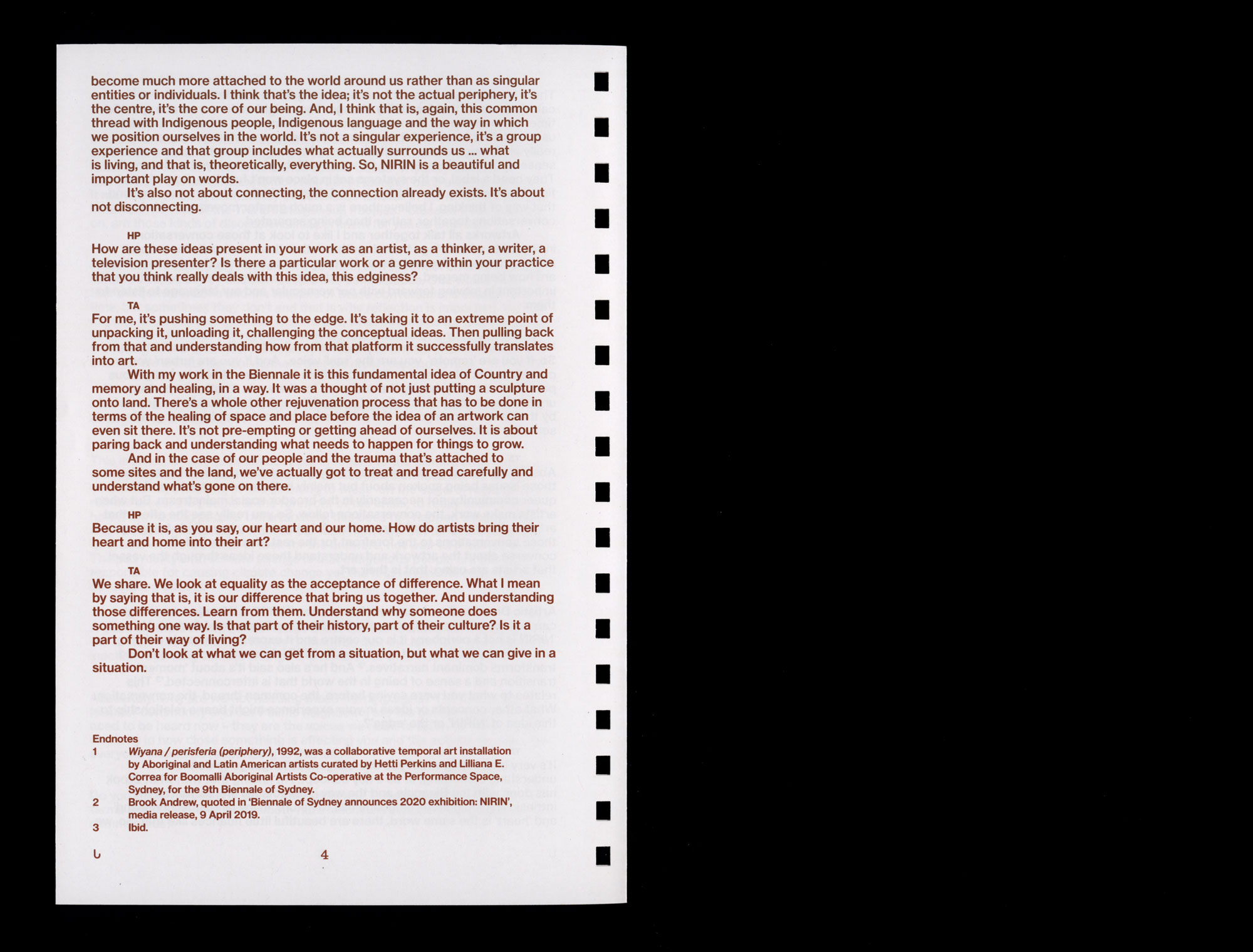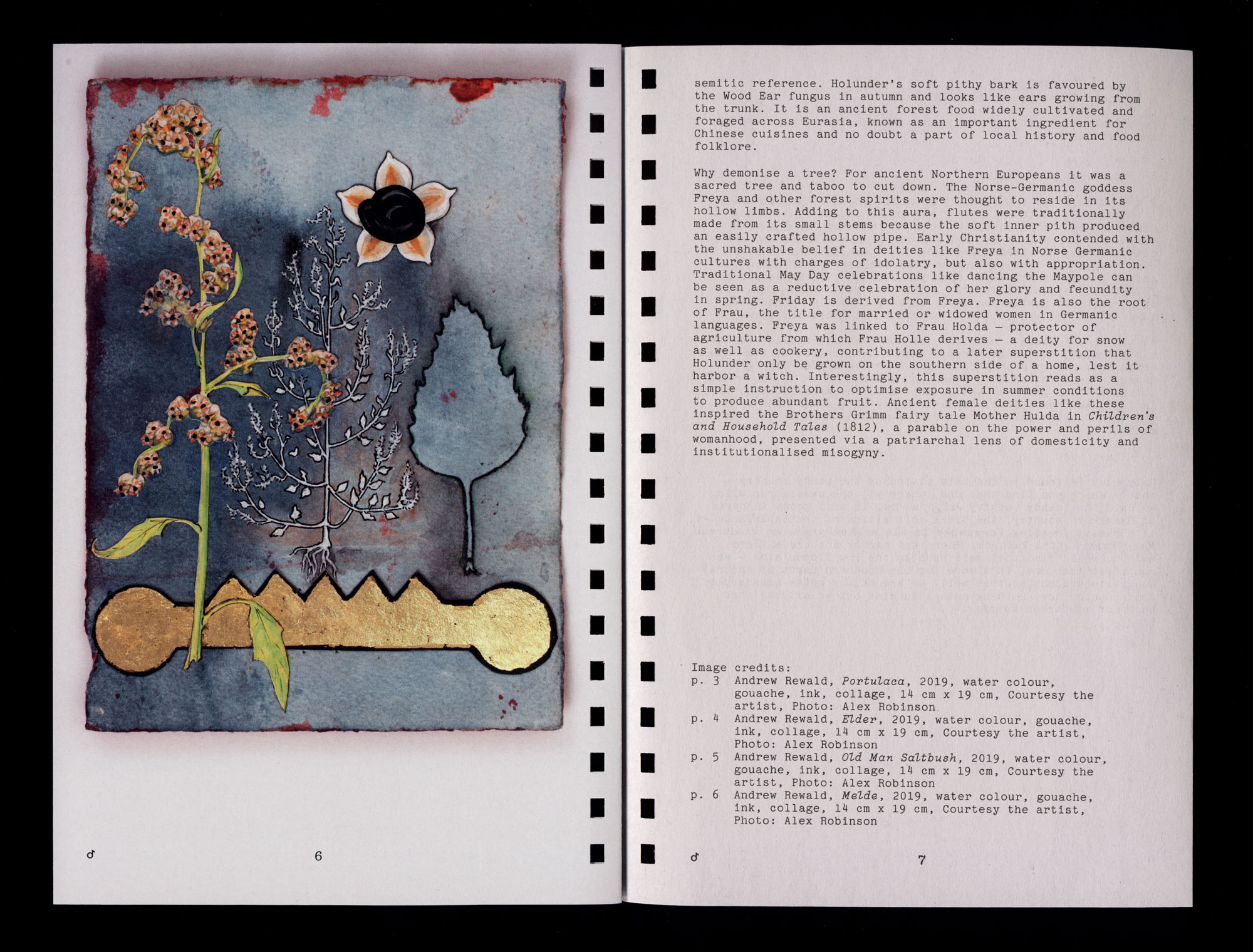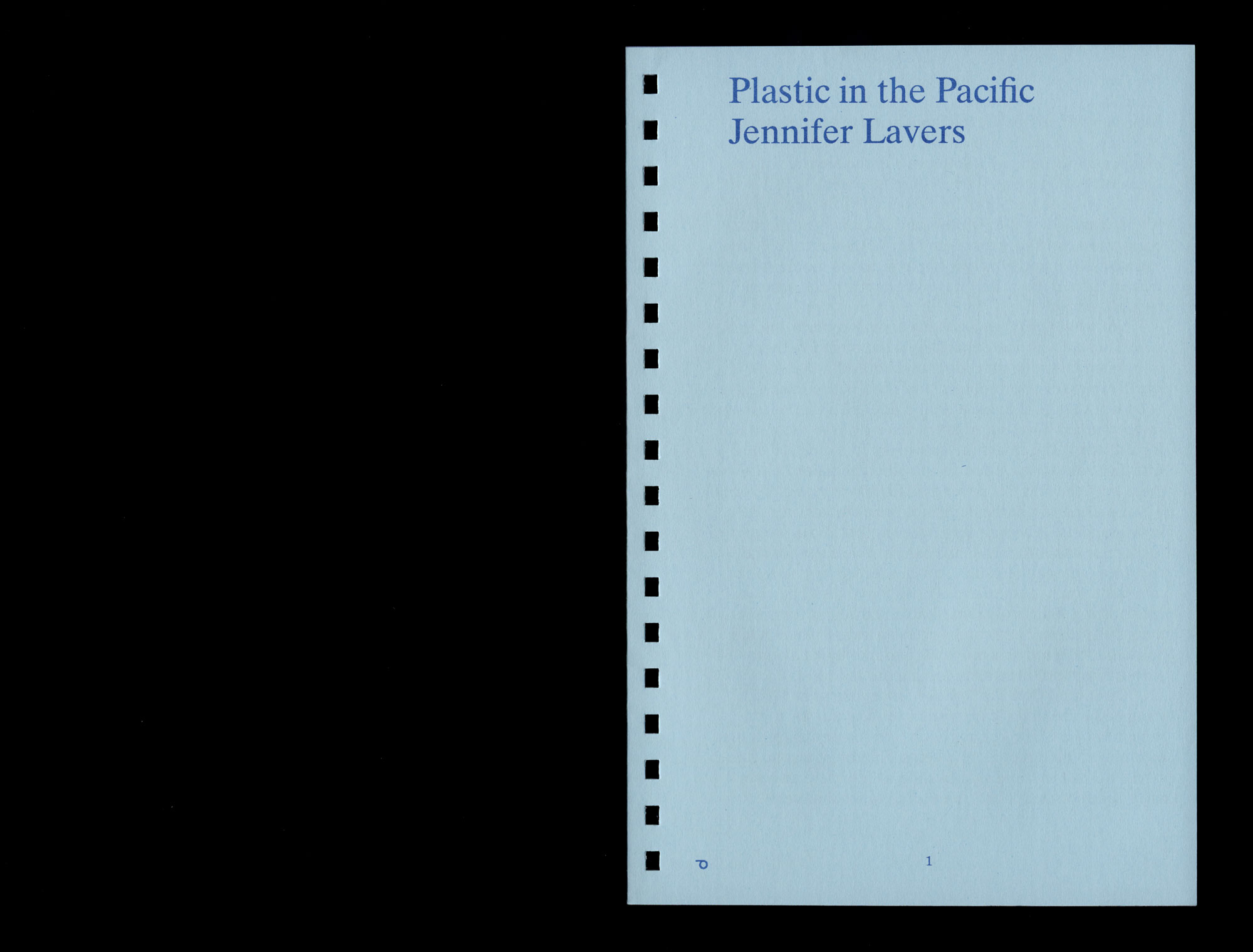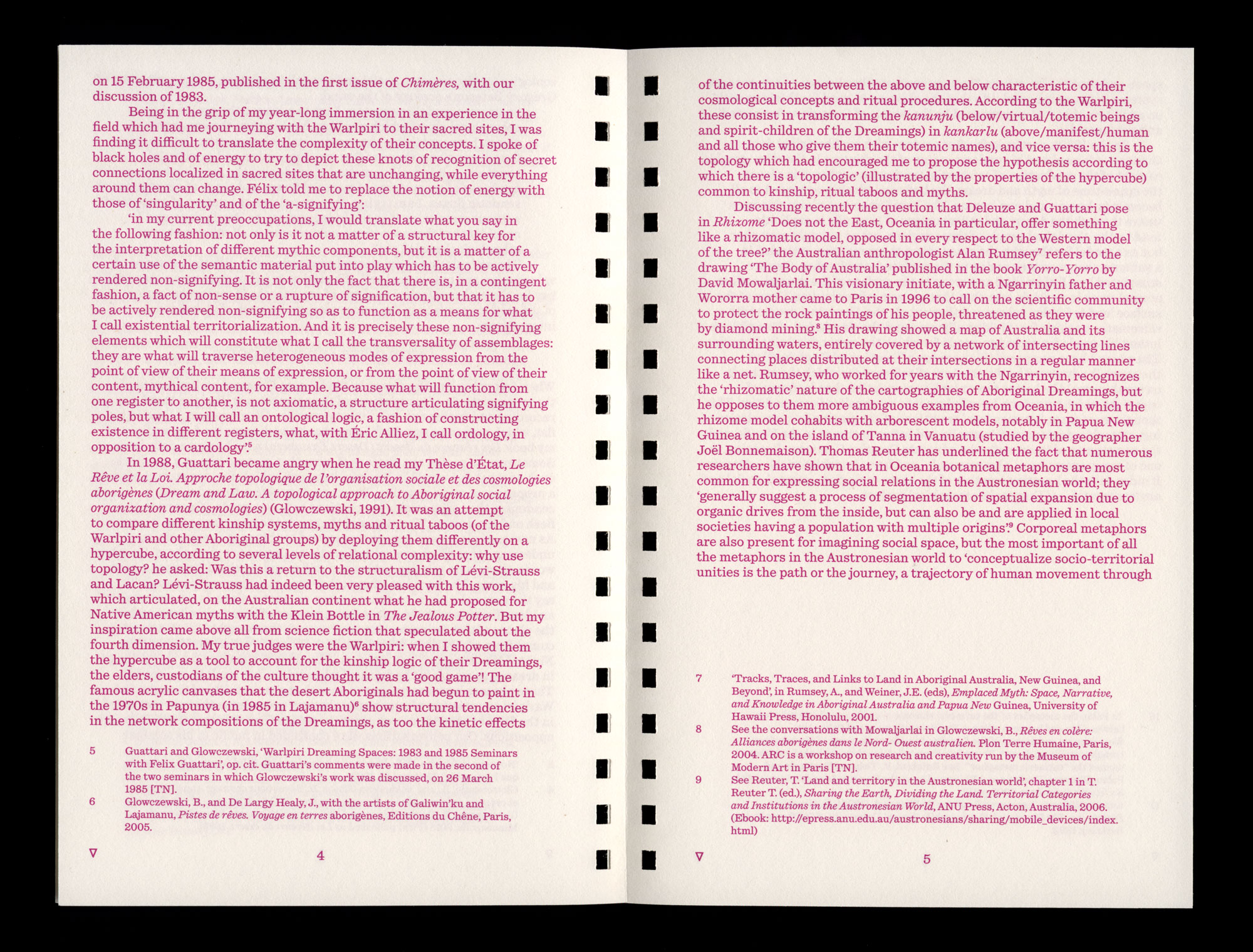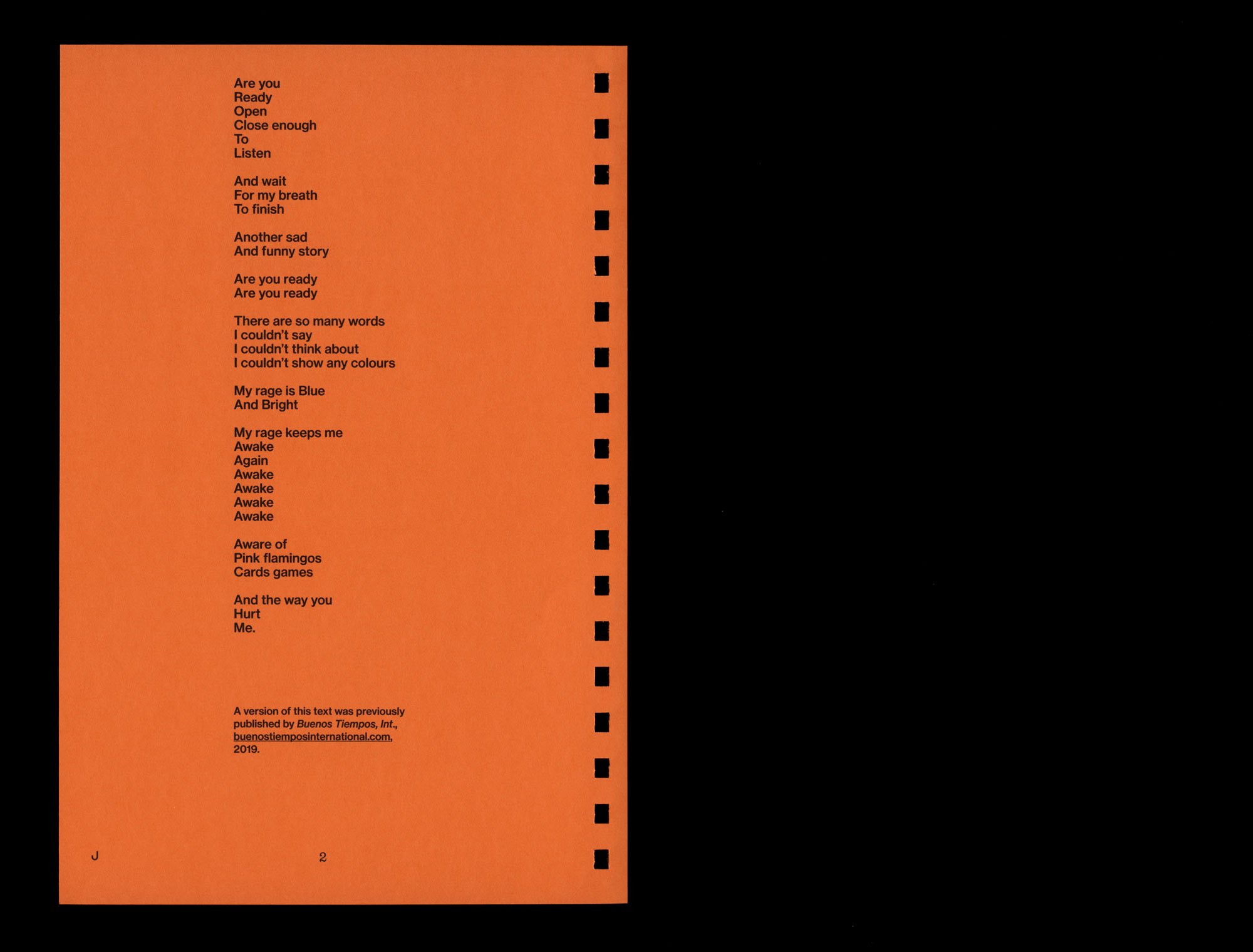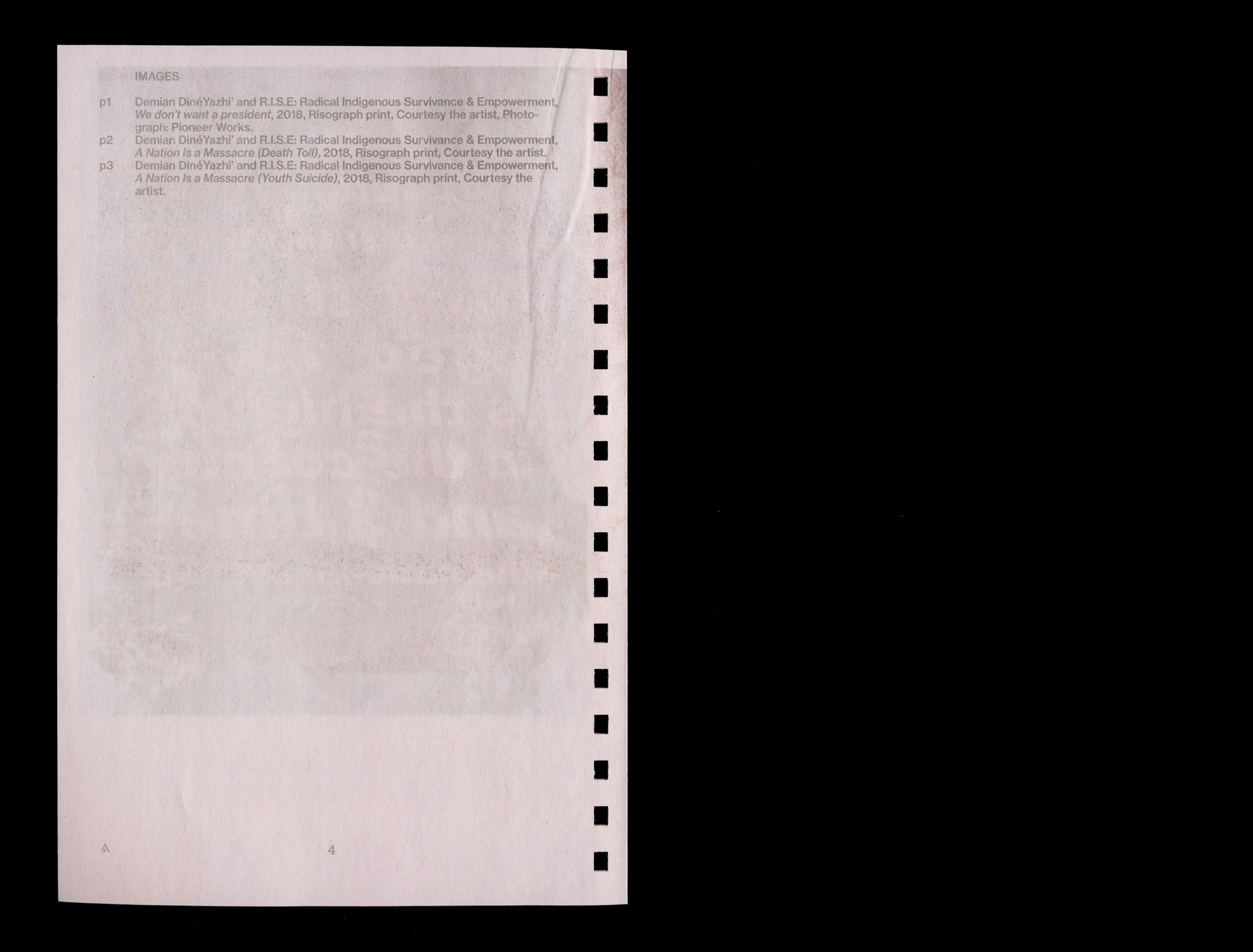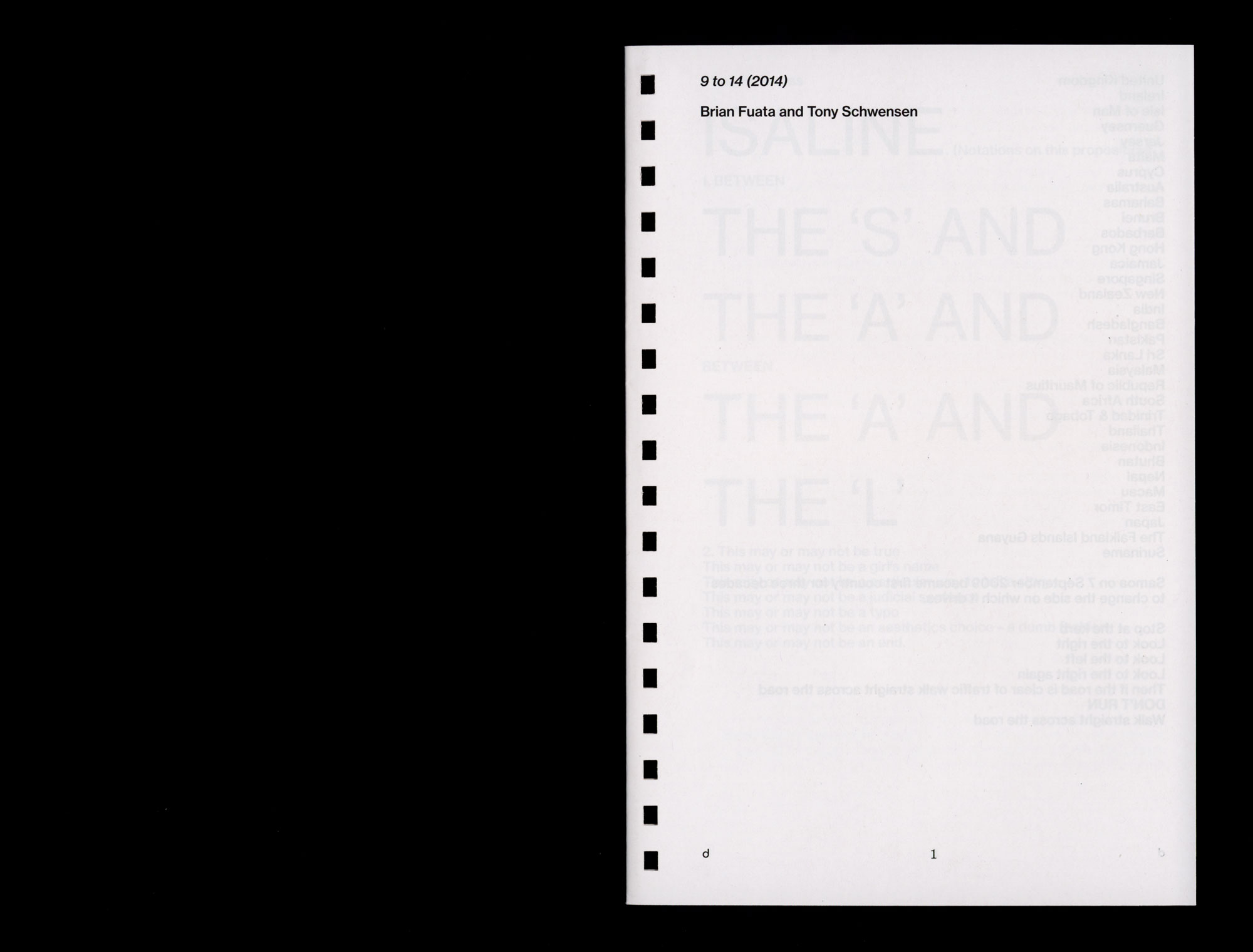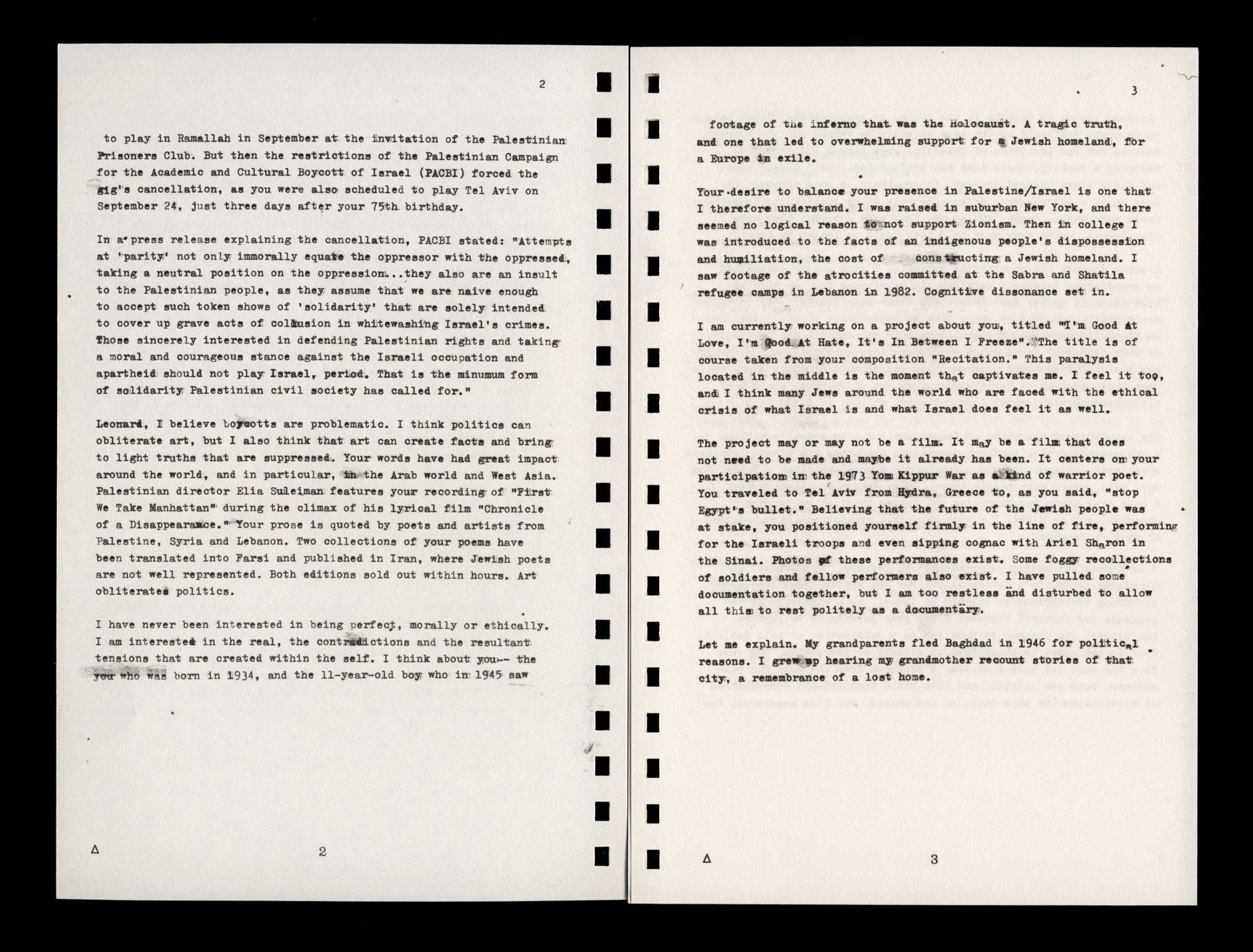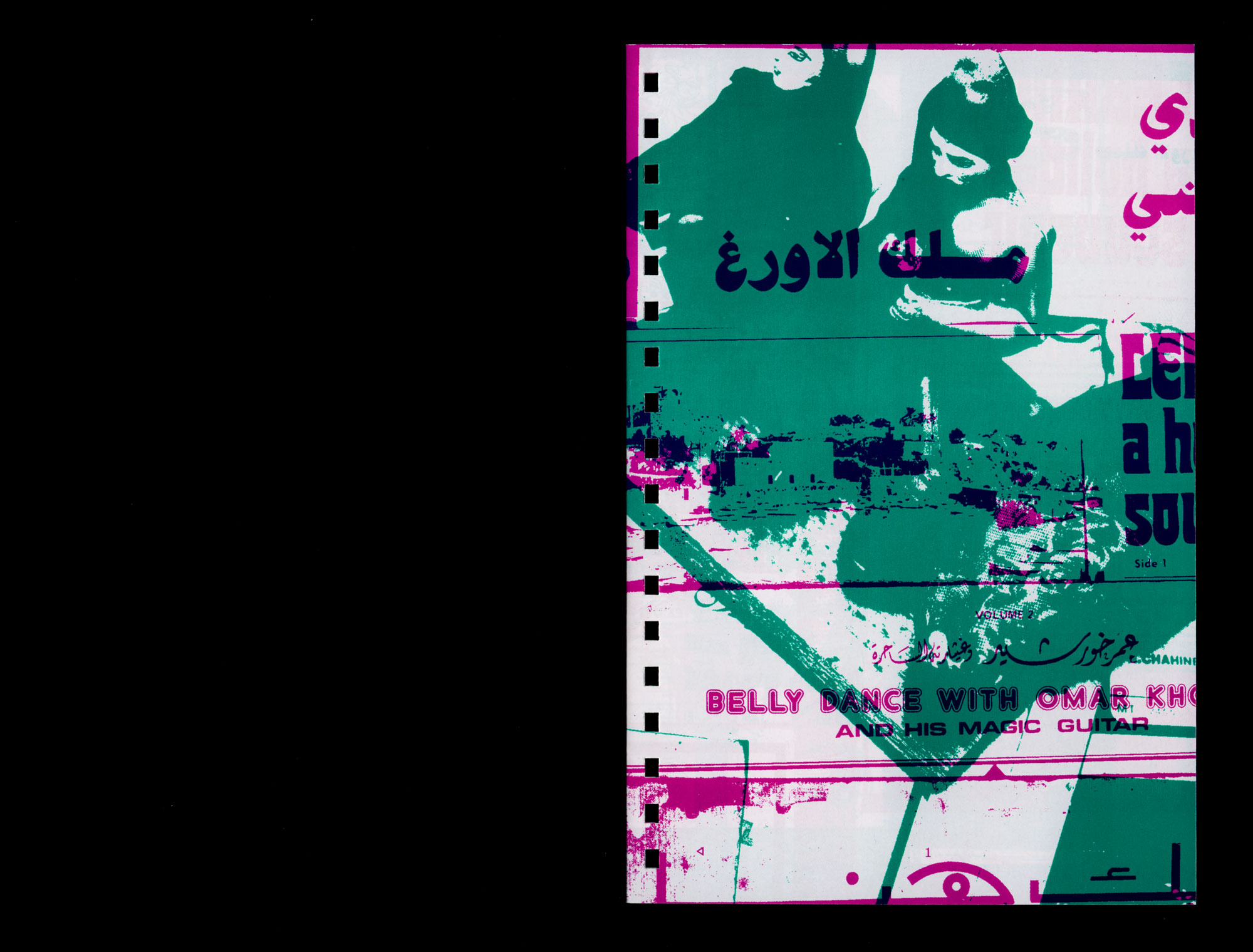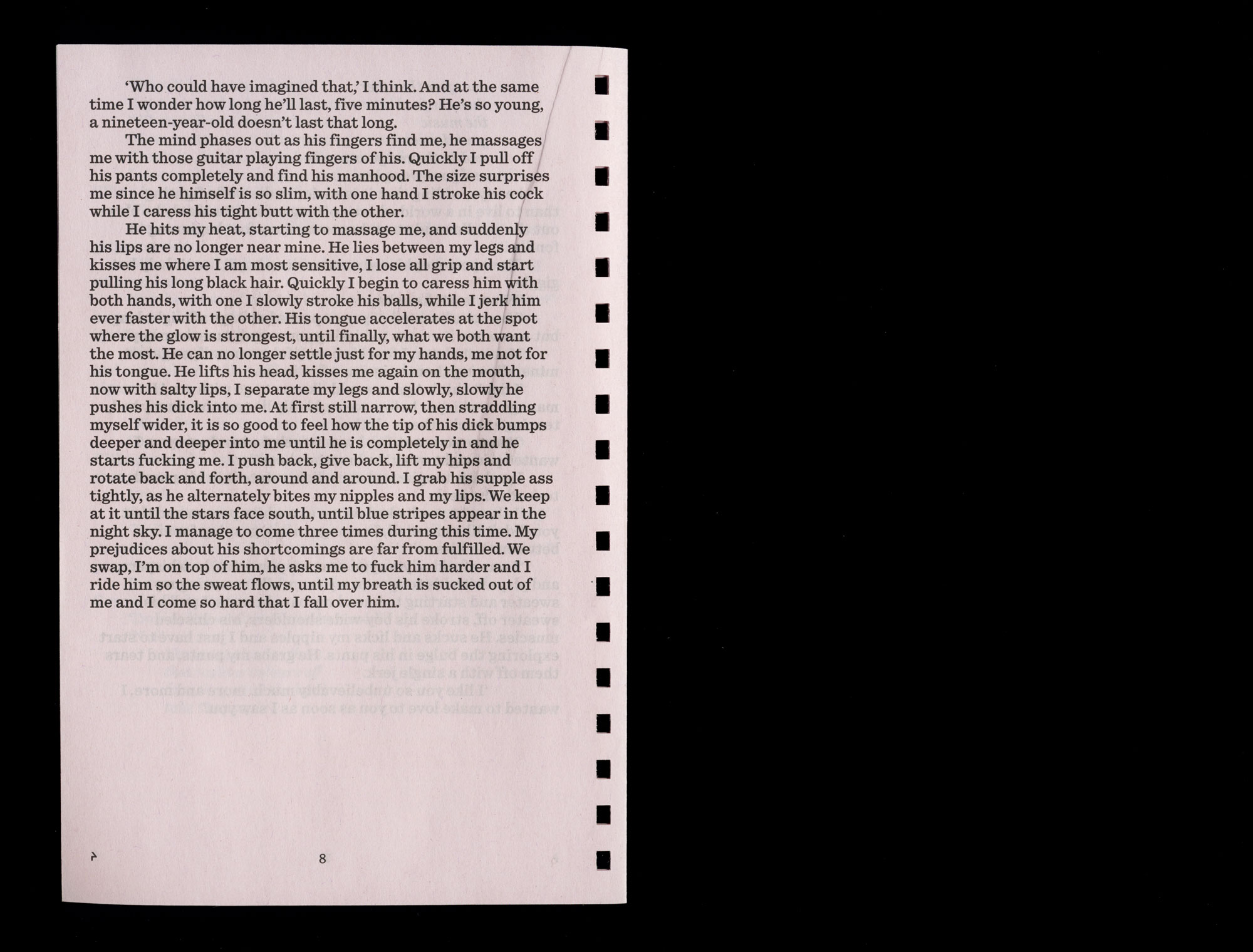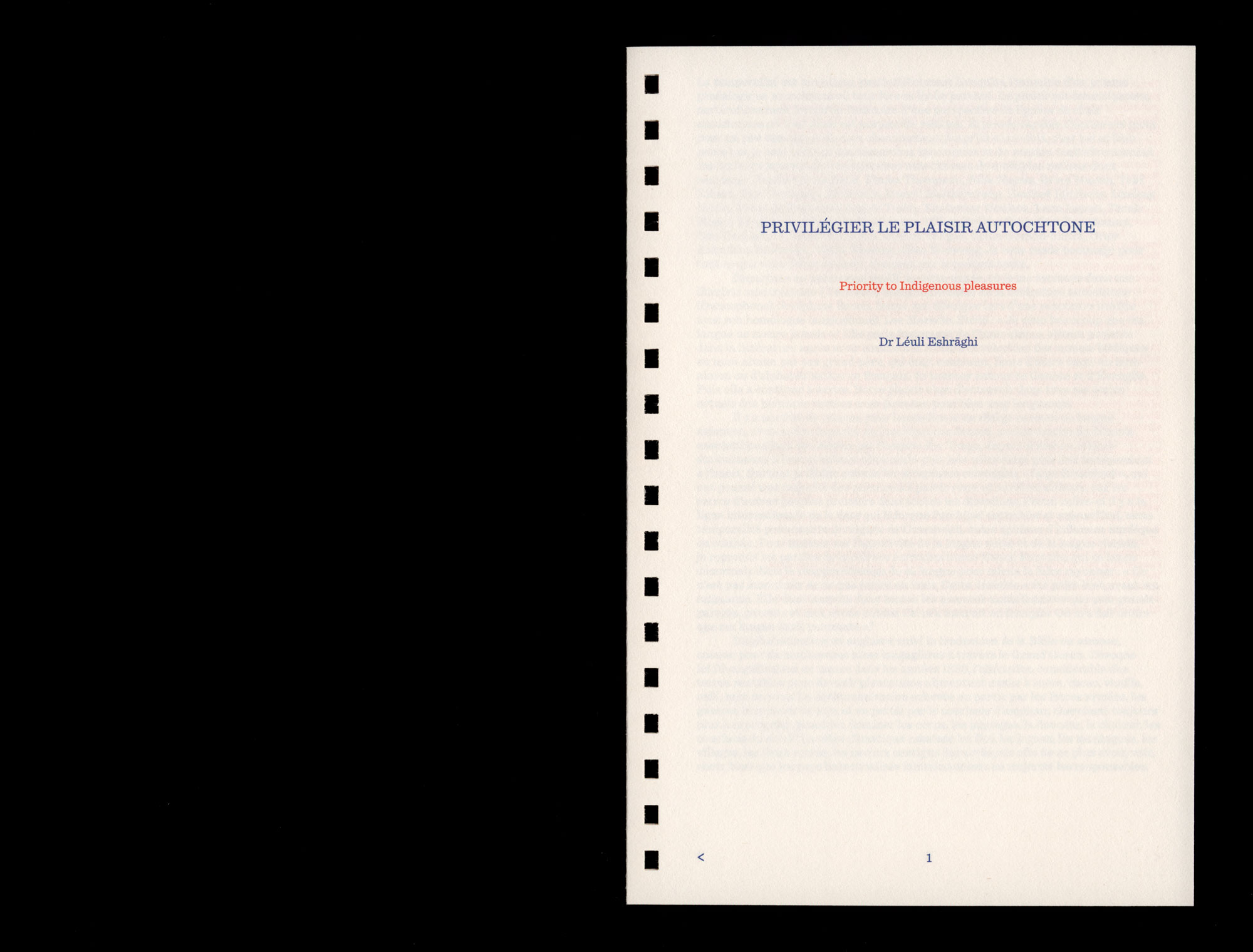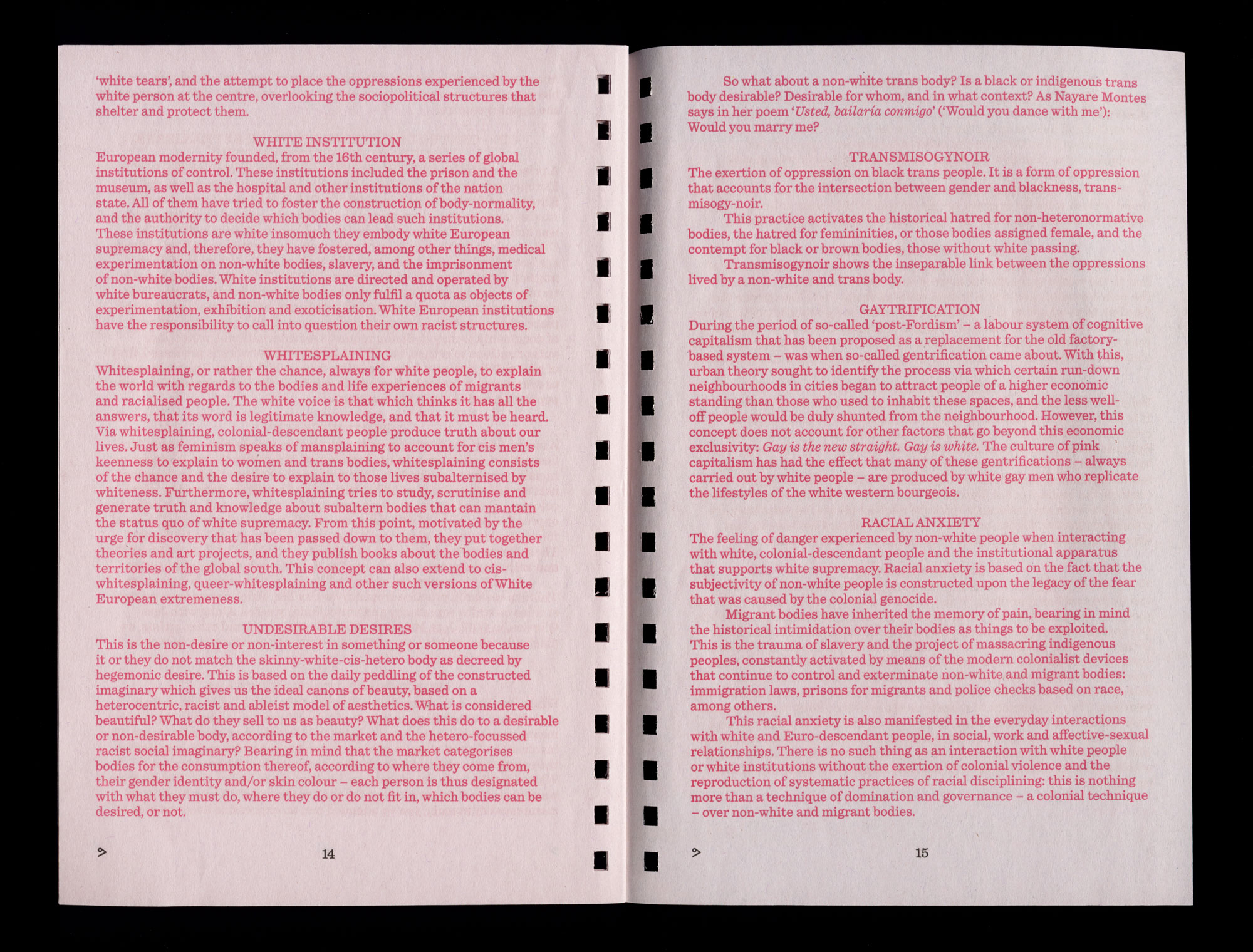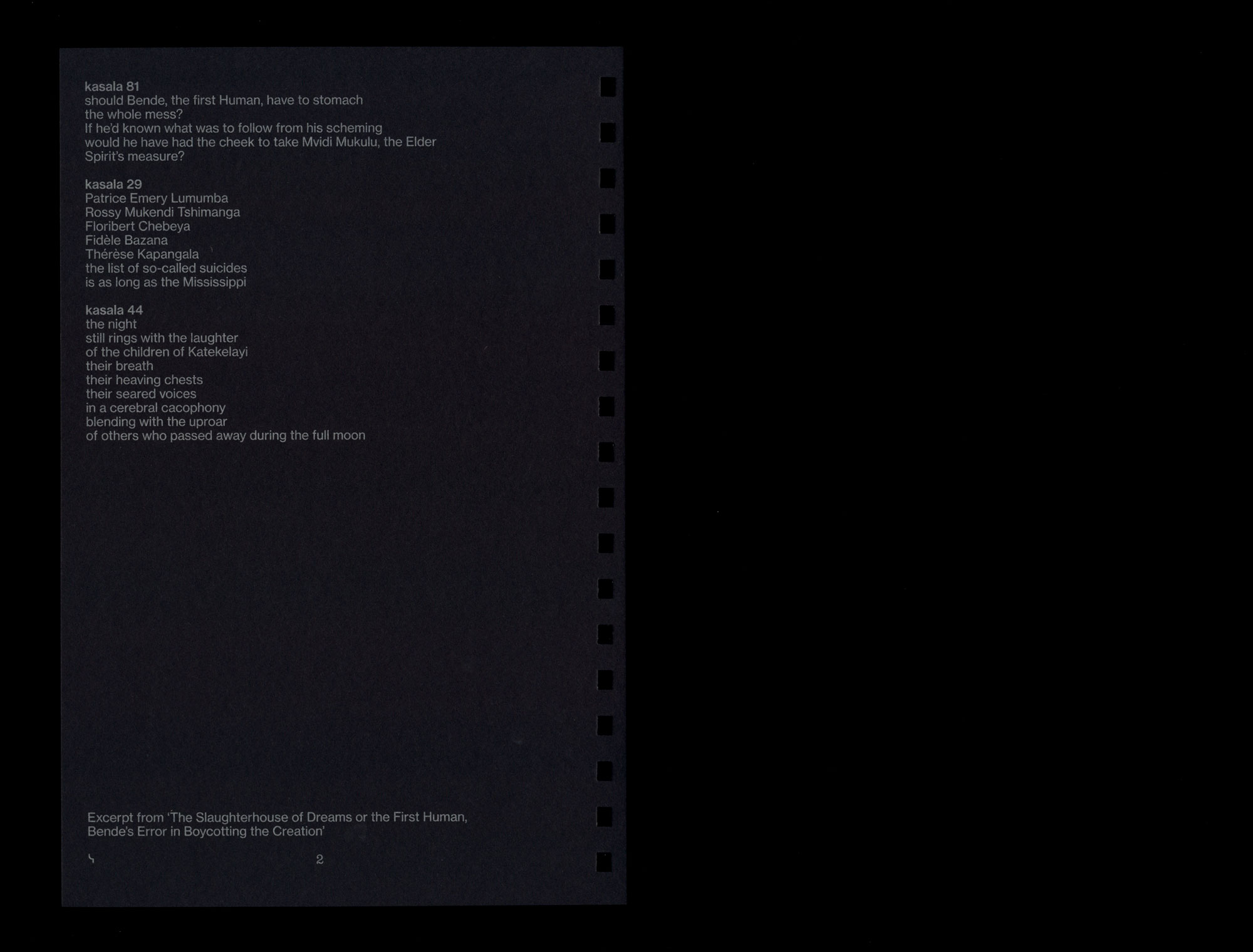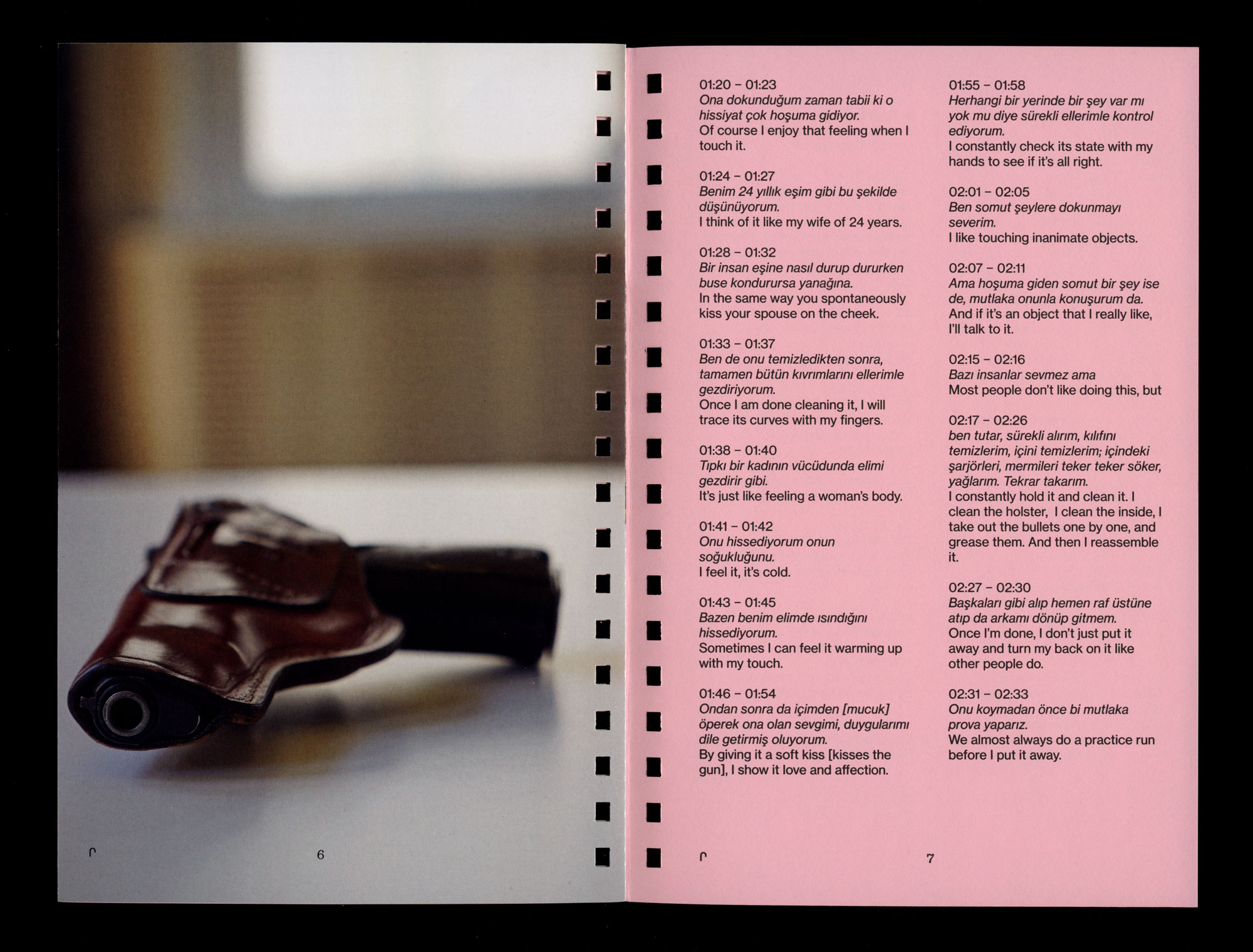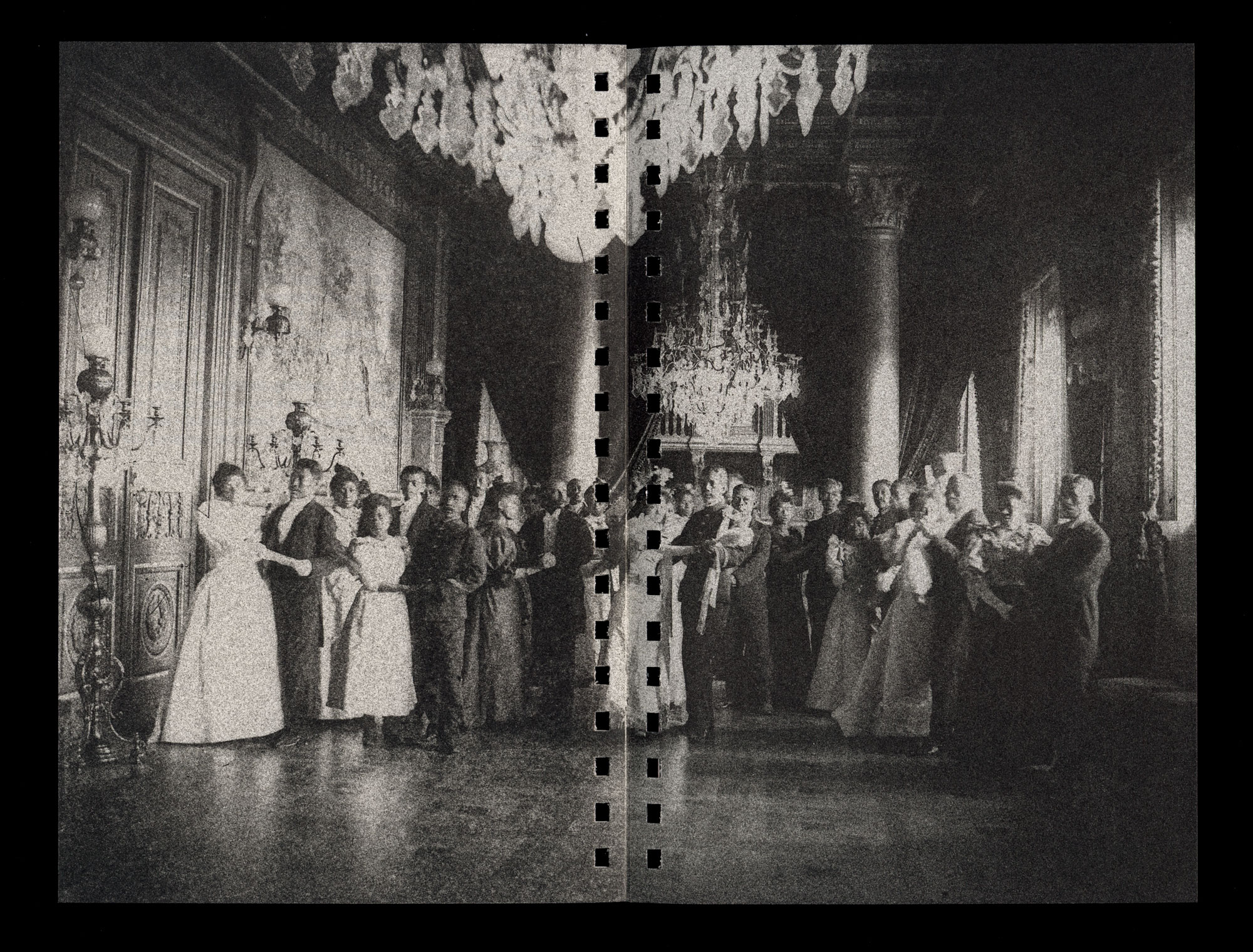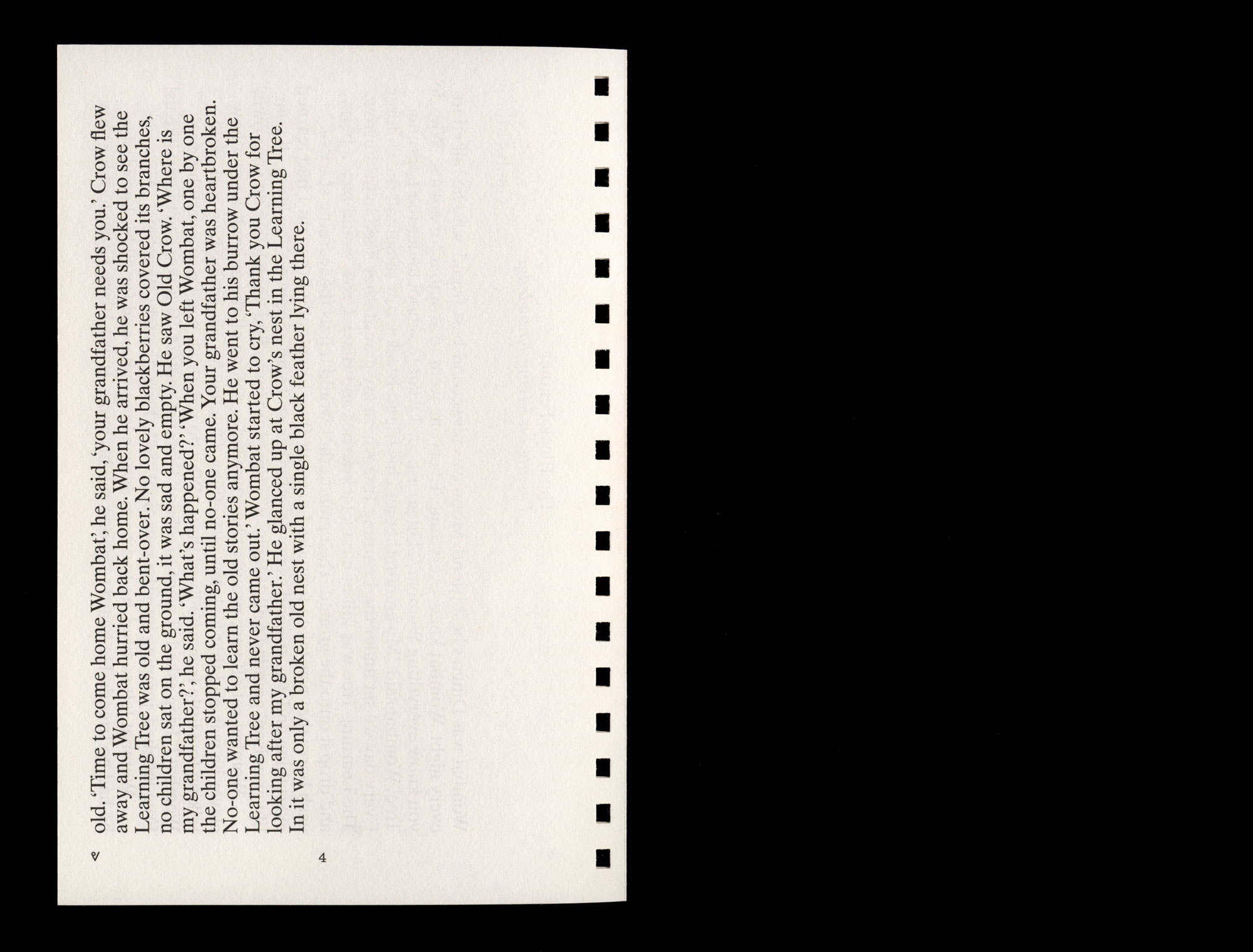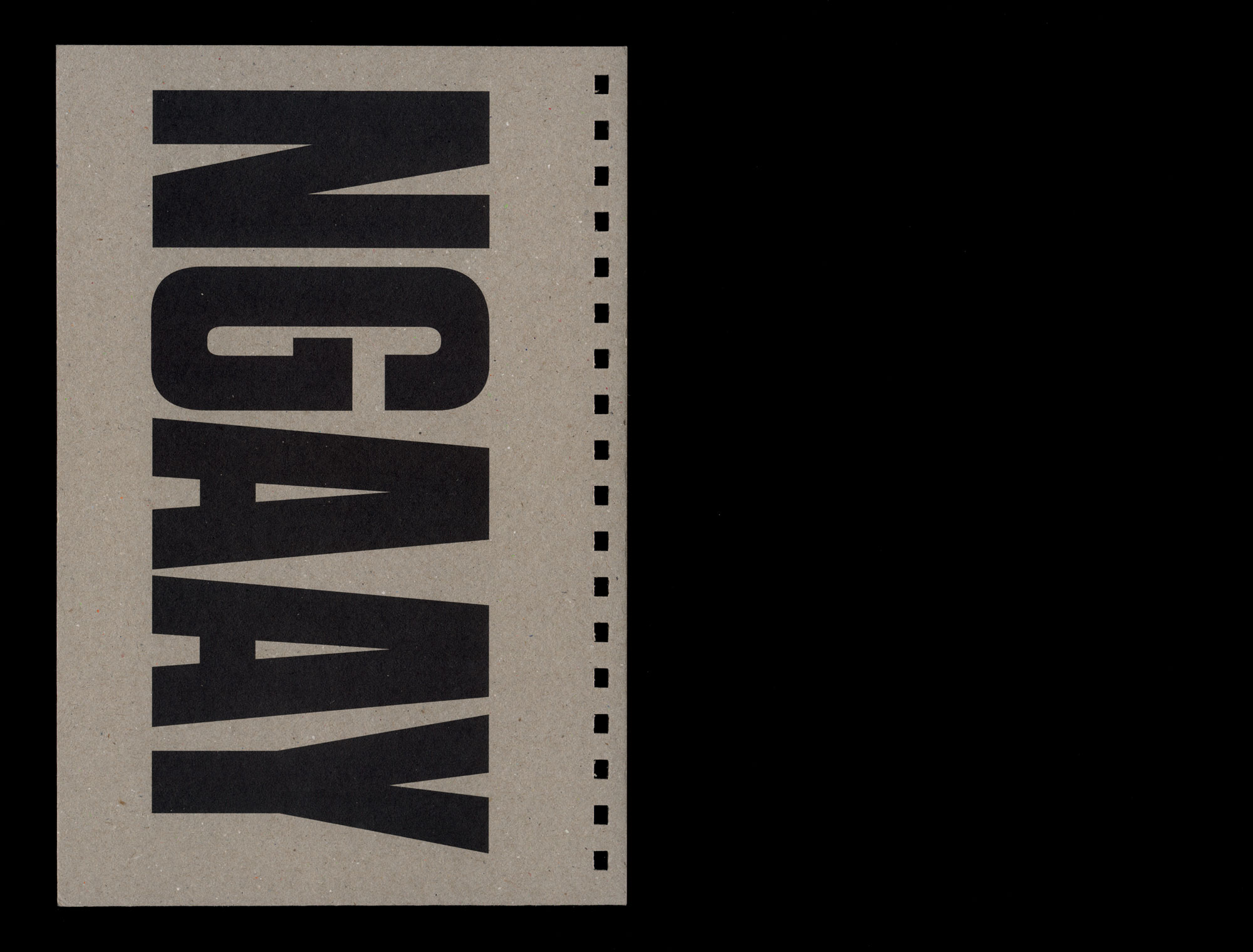The Biennale of Sydney team and authors of this publication acknowledge the Gadigal people of the Eora Nation; the Boorooberongal people of the Dharug Nation; the Bidiagal, Dharawal and Gamaygal people, on whose ancestral lands and waters NIRIN gathers.
NIRIN is a safe place for people to honour mutual respect and the diversity of expression and thoughts that empower us all.
NIRIN NGAAY is a compilation, a collection, a volume, an Artist Book, a Reader, an artwork, a sprawling, excessive heterogenous space of connections. Published as part of the 22nd Biennale of Sydney (2020), titled NIRIN, A Wiradjuri word meaning ‘edge’, this book is a space where ideas, themes, research, and experiments arising out of NIRIN find places on pages. Traversing many disciplines and forms, encompassing new and previously published works, complete works as well as excerpts and fragments and responses, each piece may ask for new modes of reading and seeing. Instead of disorienting, we see many lines darting and weaving across these works, beautiful moments of syncing and overlap, affective and abstract resonances, moments of density, as well as pauses to breathe deeply. Read and see and touch at random or with resolve – we hope that you will appreciate the way these works unfold and twist together, creating movements of meaning between them. ‘NGAAY’ is a Wiradjuri word meaning ‘see.’ To really see ‘edges’, might also be to sense and feel and trace them, they come into view with clarity, hover in the periphery, or drift away like memories.
Standing Within Edges
Jessyca Hutchens
Curatorial Assistant to the Artistic Director, 22nd Biennale of Sydney January 2020
I’m writing this introduction as we enter a new year, and from where I sit (Sydney, Australia, on unceded Gadigal country) a great devastation continues to unfold all around at an unprecedented scale – over 10 million hectares burned so far by fires. The smoke we breath in, the stories we hear and the images we see, all capture an idea of engulfing. We see images from on the ground of a thick radiating orange red glow suffusing everything, and from above, in the many satellite images and data visualisations, the unimaginable scale of the tragedy. Once news coverage of fires seemed to focus on a front line, now there is a sense of surrounding and sudden, unpredictable intersecting lines of flight. In one image seen today, vast plumes of smoke from New South Wales and Victoria are being swept 2000km across the Tasman to blanket parts of New Zealand. An image from a town on the South Island shows a hazy, smoke-filled vista that mirrors the one out of our own windows. As a nation, Australia has long promoted a nationalist fiction of being an island with stolidly fixed borders. Many have enjoyed vast global privileges while imagining our nation-state as relatively inviolable, separate and safe (for some). But dust and ash, lifted high up into the atmosphere, make quick work of distances that once seemed vast oceans of remove, touching our neighbours with ease like a poisonous handshake.
We are in the midst, on the ground – we always have been – of a globe comprised of many intersecting worlds. That includes the many First Nations that are here, that once were able to more fully care for Country in all its interconnected complexity, Country not bound by borders as hard lines on a map, but as lived and maintained relations forming continuous connection to place. These are notions that Tamara Murdock explores in her piece for this book, writing on Indigenous Protected Areas as a form of counter-mapping to the exclusionary practices of western cartography and conservation. In an excerpt from the late Kunmanara (Mumu Mike) Williams’ book, he writes about asking for the permission of traditional owners to enter the land, permissions from those that ‘know the natural, cultural and social values of the site’, and adds ‘You can’t take a short cut with this.’ He writes also about how Law is passed onto the young, ‘so that they always have the old knowledge around them.’ A privileged strata of the globe subsists on frenzied short-cuts of bypass and hard-lines of exclusion, and the knowledge around and in-between evaporates or is deliberately erased. A cloud of smoke on a satellite map is an apt (and easy) visualisation of the transnational chains of effect created by the global processes of climate change, but as a thing itself it is difficult to grasp conceptually, to imagine all that it clings to and touches, all of the morphing points of contact. In Latai Taumoepeau’s manifesto addressing climate change, ‘Stitching up the Sea’, she writes: ‘We stand inside shifting co-ordinates of the in-between.’ To fight for places, we must contend with the slippery, shifting, transforming edges, to really ‘stand from inside’ and speak. Systems of thoughts and creative modes that contend with and care for the complex edges between are needed more than ever. So that we can become emplaced rather than surrounded. So that we live within networks of meaningful relations rather than expediencies.
We developed this book as a way of expanding upon the theme of NIRIN ‘edge’ – to explore the many ways that artists, writers, and researchers attend to lines of connection, to materials and spaces and relations in-between and in-transition. Edges and modes of relating explored are between people, materials, plants, animals, foods, places, and encompass intangible thresholds of time and spirit-worlds. We believe this work helps to thicken, make visible and complicate interconnectedness and relating, in many instances, making a moral case against the accelerated modes of connecting through global networks that enable rampant extraction and exploitation, and that often rely on disconnecting people from each other and to place, culture, and history. Joseph Williams and Jimmy Frank, members of the artist collective Tennant Creek Brio, speak frankly about the many forms of dispossession faced by their community, but end with the hope of new creative forms and continuing culture. They end their piece: ‘Kamarnta wilyanka pakamarra (we are holding it strong)’. As artist Tony Albert says in his conversation with Hetti Perkins, ‘It’s also not about connecting, the connection already exists. It’s about not disconnecting.’ Contributions such as Mayunkiki’s interview with Ainu elder Eiko Yamamoto on the Ainu tattooing practice, sinuye, banned by the Japanese government, and Maria Thereza Alves’ personal essay addressing racism and reductive categories for Indigenous identity in Brazil, demonstrate the complex, creative ways that artists open up dialogues and trace lines of cultural connection through and despite the violent erasures and disruptions of colonialism. Alves asks: ‘In respect of the communities which we no longer know and to which we belong to – how do we define ourselves?’ An answer that seems to come from across this book is to tell and unfold stories that not only describe identities and communities in complex ways but are creative acts themselves of forming new ways of relating and belonging. These are stories which often look back through history and forwards, often in non-linear ways, creating anachronic resonances, and allowing histories and fictions to dance together – against reductive historical fictions and towards multivalent truth-telling.
In artist Michael Rakowitz’s ‘Letter to Leonard Cohen’, typed out on the late musician’s type-writer, Rakowitz draws out numerous connections to relate to a fellow artist, and to argue in support of the Academic and Cultural Boycott of Israel. This dialogic mode never dissolves into relativism, instead Rakowitz suggests a way of taking a stand from within the complexity between two opposing poles, to avoid what he calls ‘the paralysis located in the middle’. Here, and in many pieces, the middle, the spaces in between, are so located because they belie, not a simple middle ground of compromise, but a position from within complexity and fluidity, resilient against the pernicious erasure and seductive simplicity of dominant narratives and modes of being. As Léuli Eshrāghi writes in a piece that considers the way languages enable or inhibit modes of relating: ‘In order to speak of Indigenous pleasures, we must be able to literally immerse ourselves in fluid states, necessary to wellbeing, to sensuality, to fulfilment, to openness.’ Instead of avoidant or apolitical relativity, these artists show modes of relating and connecting that open out towards differences between things without appropriating or dissolving them. In Jota Mombaça’s work of science fiction, a new human subjectivity in a state of transformation has a permeable boundary with the earth itself, as it flees and resists the industrial military complex of CISTEM. In Marry Somby’s work of erotic fiction, cross-continental Indigenous lovers love. Edges exist as negotiated contact points eliciting joy, frisson, healing, learning, and entanglement.
A central aspect of NIRIN is that it does not propose certain kinds of discursive ‘edges’ as critical correctives to centres, but as possessing their own centrality. Pieces within this volume assert their own sovereign space away from and against exploitative dominance. There are pieces that seem to call, chant-like, against an unacceptable and annihilating present. The repeated ‘We don’t want’, in Demian Dine Yahzi’s ‘We don’t want a president’, ends: ‘We want to exist never having to comprehend the need to defend ourselves.’ Misheck Masamvu’s use of repetition in the poem ‘Still’: ‘Still oppressed’, ‘Still hungry’ and ‘Still loving n’ hating’. Or in Gina Athena Ulysse’s ‘New Rules of Engagement: A Remix’, which references the death of Eric Garner, uses a bolded, repeated ‘I can’t breathe’. She writes: ‘I can’t breathe too desperate for spaces where I can live in my own skin where we can breathe in the castle of our skin.’ These works and many others, act as urgent calls for a way out and beyond a violence and oppression that is unrelentingly repetitive, a sense of morphing historical churn articulated in Karla Dickens’ ‘A Dickensian Circus’ which ends: ‘The clowns enter and the show goes on...’ At the same time, space is being taken back, held apart, and opened up. Dickens also writes: ‘a dark sideshow has found its way into a womb of Colonial privilege.’
One of the most generative aspects of undertaking this book has come in allowing for a variety of responsive modes: interviews, replies, collaborations, continuations and translations. Taqralik Partridge’s poem ‘untitled’, written as a response to a performance by Denilson Baniwa (who also has a work in this book), has been adapted into Inuktitut by Ida Saunders, as well as translated by Corina Wayali Norman into Dharug Dalang (in consultation with Julie Bukari Webb). Corina has also written her own responsive poem. The totality of the work is beyond these pages, a web of connections between First Nations artists, writers and translators, perhaps summed up in the very first line of Taqralik’s poem, in which she writes, ‘we saw the multitudes.’ Ideas of response and continuation have carried over into the very design of the book where Stuart Geddes and Trent Walter have approached each piece as an autonomous work, while also making connections between and across the volume. What remains fascinating about many of the works in this book – far too many to mention here – is the way they manage to take positions without attempting to reduce or define away complexity, uncertainty, or fluidity. There is value given to the connections that ground us – through senses of place, identity, and history – while allowing for and acknowledging the porous borders between things. Standing within edges – we see a dense web of connections, openings, and questions, which allow us to see the multiple from within the integrity of generous, creative positions.
NIRIN (Edge) GARAGULA
DHAAGUN
(Earth: Sovereignty and Working Together)
BAMUL WIYANGA
BAGARAY-BANG
(Healing)
NGARALI DAMARAWA
YIRAWY–DHURAY
(Yam-Connection: Food)
MIDINY BADA
GURRAY
(Transformation)
YALABI DAYALUNG
MURIGUWAL GIILAND
(Different Stories)
BAYARA
NGAWAAL-GUYUNGAN
(Powerful-Ideas: The Power of Objects)
WINGARA BUBUWUL
BILA
(River: Environment)
BADU GARRIGARRANG
These seven interconnected themes inspire and are present across NIRIN NGAAY and the NIRIN exhibition. They are provided here in Wiradjuri, English and Dharug. The translation into Dharug was provided by Corina Wayali Norman in consultation with Julie Bukari Webb.
Contributor Biographies
Tony Albert’s practice combines text, video, drawing, painting and three-dimensional objects. Examining the legacy of racial and cultural misrepresentation, particularly of Australia’s Aboriginal people, Albert has developed a universal language that seeks to rewrite historical mistruths and injustice.
Marry Ailonieida Somby is a Sami writer, dramaturg and visual artist from Sirbma, Norway. Somby’s works in poetry, prose, and theatre deals with themes related to Sami mythologies, trans-indigenous perspectives and transgressive fiction. She wrote the first children´s book in the Sami language, titled Ámmul ja alit oarbmæli, and has been nominated for several awards including The Nordic Literature Award (2016) and the Norwegian Hedda award for the theatre piece Stainnak, The White Reindeer (2013).
Charlotte Allingham is a 26-year-old Wiradjuri, Ngiyampaa woman from New South Wales, with family ties to Condobolin and Ivanhoe. She currently lives in Naarm, creating illustrations about her culture and the impacts of Colonization.
Joël Andrianomearisoa’s work develops around a non-explicit, often abstract, narration, which everyone perceives yet cannot put a name to. His world of forms weaves his work into sequences often mired in a deep sadness caused by an absence that is impossible to fill. And for that he uses, in no particular hierarchical order, sound in its immaterial dimension or the book in its hyper materiality, silky textile or rough plastic, black or the most shimmering colours.
Dr. Gina Athena Ulysse is a feminist interdisciplinary artist, anthropologist and writer. Her work has appeared in Feminist Studies, Gastronomica, Meridians, Souls, Third Text, Transition, and other venues. Her last book Because When God Is Too Busy: Haiti, me & THEWORLD (2017) – is a collection of poetry, performance texts, and photographs.
Denilson Baniwa was born in Rio Negro, Amazonas in Brazil. His career as an artist was shaped early in childhood, informed by the cultural references of his people. Baniwa is an anthropophagous artist who appropriates Western languages to decolonise them in his work. Baniwa is known for breaking paradigms and opening ways for Indigenous people in national territories to be protagonists.
Deborah Beck is an author, artist and historian. She has held 18 solo exhibitions in Sydney and Melbourne, and has participated in group exhibitions throughout Australia. She is currently a lecturer, collections manager and archivist at the National Art School. She has also co-curated five major exhibitions in the NAS Gallery, and written three books on the history of the site.
Tania Bruguera (born in 1968, Cuba) is an artist and activist whose performances and installations examine political power structures and their effect on society’s most vulnerable people. Her long-term projects have been intensive interventions on the institutional structure of collective memory, education and politics.
Colectivo Ayllu is an artistic research group of anticolonial actions through poetic and political practices. It is formed by migrant and sexual dissident bodies that currently resist in the city of Madrid.
Elicura Chihuailaf is a Mapuche poet and “oralitor” born in the community of Kechurewe (southern Chile). His bilingual mapudungun-castellano books include publications of poetry such as El invierno y su imagen (1977), De Sueños Azules y contrasueños (1995), Sueños de Luna Azul (2008) and the essay Recado confidencial a los chilenos (1999). He was Secretary General of the Association of Indigenous Writers of America.
Paschal Daantos Berry is a performance maker, writer, dramaturg and curator whose practice is focused on interdisciplinary, cross cultural and collaborative processes. His 14-year partnership with Manila based company Anino Shadowplay Collective has yielded several critically acclaimed works. He led the curatorial program in Blacktown Arts from 2015 -18 and is the Curator of Programs and Learning for the Biennale of Sydney.
Joel Davison is a Gadigal and Dunghutti man from Sydney who for the past four years has been on his journey to revitalise his family’s Gadigal language. The poetry written in Gadigal language represents a huge milestone in that journey, the ability to express himself completely in the language of his pre-colonial ancestors. During his 9-5 Joel leads technology delivery projects at Commonwealth Bank.
Karla Dickens: The driving forces behind Karla’s need to communicate are her cross-cultural heritage often focusing on her Indigenous (Wiradjuri) bloodline, sexuality and life experiences as a soulful connected woman. She uses recycled everyday items to explore notions of persistence amidst inherent violence and misunderstanding.
Demian DinéYazhi´ (born 1983) is an Indigenous Diné transdisciplinary artist born to the clans Naasht’ézhí Tábąąhá (Zuni Clan Water’s Edge) and Tódích’íí’nii (Bitter Water). They are the recipient of the Henry Art Museum’s Brink Award (2017), Hallie Ford Fellow in the Visual Arts
(2018), and Eiteljorg Contemporary Art Fellow (2019). @heterogeneoushomosexual
Bonney Djuric: Melbourne born artist, activist and co-founder of the Parramatta Female Factory Precinct Memory Project, Bonney Djuric has drawn from her personal experiences of institutional ‘care’ as a young person, in challenging societal perceptions about the role, function and legacy of institutional ‘care’ through her research, writing and art practice.
Grace Dlabik is a devoted mother and carer, a strong and proud PNG / Austrian woman who has carved out an impressive career that spans over two decades as a multidisciplinary creative director. A dedicated activist, philanthropist, entrepreneur and expert in pop culture, Grace is the founder of BE. and BE. ONE – a collective and creative agency championing young people and strengthening ways in which they can be seen, valued and heard.
Dr Léuli Eshrāghi, Sāmoan artist, curator and researcher, intervenes in display territories to centre Indigenous presence and power, sensual and spoken languages, and ceremonial-political practices. Through performance, moving image, writing and installation, ia engages with Indigenous possibility as haunted by ongoing militourist and missionary violences that erase fa‘a‘fafine-fa‘atama from kinship structures.
First Dog on the Moon claims to live in Tasmania and to be a cartoonist, author, artist, radio person, performer, anarcho-marsupialist and national treasure. You can see some work in the Guardian. First Dog gets up in the morning because the world is ending and we need to save it.
Jimmy Frank (Jupurrula) is a cultural diplomat and a member of The Tennant Creek Brio, an artist collective based in the Barkly regional town of Tennant Creek which is located in Warumungu country in the Northern Territory. Jimmy’s expertise extends across various traditional practices including carving implements such as boomerangs, coolamans, woomeras, spears, stone knives,
and shields.
Brian Fuata is an improvisor.
Stuart Geddes is a graphic designer and occasional publisher, mostly of books. Stuart is one of the Australian members of Alliance Graphique Internationale. He is also an industry fellow, researcher and PhD candidate at RMIT University, where his research interests converge around the form of the book, through collaboration, emerging histories, and material practices.
Stephen Gilchrist is Associate Lecturer of Indigenous Art at the University of Sydney and belongs to the Yamatji people. He is a writer and curator who has worked with the Indigenous Australian collections of the National Gallery of Australia, the British Museum, the National Gallery of Victoria and the Hood Museum of Art, Dartmouth College.
Simryn Gill is an artist who lives and works in Sydney, Australia and Port Dickson, Malaysia.
Barbara Glowczewski, a French anthropologist and professorial researcher at the CNRS (http://las.ehess.fr/index.php?1716), has worked in Central Australia since 1979, and also in the Kimberley and Palm Island. She connects Indigenous struggles for social and environmental justice with French collective alternative ways to inhabit territories. Author of pioneer multimedia work and many books (Desert Dreamers, Indigenising Anthropology with Guattari and Deleuze).
Paz Guevara is a curator, researcher and author. Currently she works at Haus der Kulturen der Welt – HKW in Berlin, Germany, where she collaborates in the long-term project Kanon-Fragen that questions the dominant cultural narratives. There, she curated Afro-Sonic Mapping (2019) and co-curated Parapolitics (2017). In 2011 and 2013, she co-curated the Latin American Pavilion at the Venice Biennale.
Olaf Holzapfel is a visual artist from Berlin. He has worked on the relationship between landscape and megalopolis in long-term projects, such as “Housing in Amplitude” in collaboration with Sebastián Preece in the South of Chile (2014). Since 2009 Holzapfel has been collaborating with Teresa, Mirta and Luisa Gutiérrez, craftswomen from the Wichi communnity in the Argentinean Gran Chaco. Holzapfel participated at the Venice Biennale in 2011 and Documenta 14 in Athens and Kassel in 2017.
Lucas Ihlein uses socially-engaged art to explore human-environment relations. His recent project “Sugar vs the Reef?” in collaboration with Kim Williams investigated grassroots cultural leadership in the Queensland sugarcane industry. Ihlein is a student at the Kandos School of Cultural Adaptation, and a researcher at University of Wollongong. See lucasihlein.net
Emily Karaka is of Ngati Te Ahi Waru bloodlines with whakapapa to Puketapapa and Ihumatao from her father John Mita Karaka, named after his Great Grandfather Mita Karaka who went to England with the Maori King to address Treaty of Waitangi concerns in 1914. Karaka has painted and exhibited her works for 40 years and worked since 1992 for her other iwi Ngai Tai ki Tamaki addressing its environmental concerns and Treaty of Waitangi claims. Her paintings address political and environmental issues and Maori values.
Tarek Lakhrissi is an interdisciplinary artist and poet based in Paris, France, who works on the performativity of language through poetry, research and experimentations.
Dr Jennifer Lavers is a marine eco-toxicologist with expertise in tropical and temperate seabird ecology, plastic pollution (marine debris), and invasive species management, and is currently a Research Scientist at the Institute for Marine and Antarctic Studies. Dr Lavers is a member of Adrift Lab, a dedicated group of researchers studying all things adrift in the ocean, who are participating in the 22nd Biennale of Sydney.
Mayunkiki was born in 1982 in Hokkaido, Japan. She is a member of ‘Marewrew’, a women’s vocal group whose activities centre around the rebirth and passing on of the traditional Ainu song ‘Upopo’ using Ainu rooted rhythmical patterns, and the signature style of singing in a natural trance-like chorus round. She also participates in several creative projects related to Ainu culture as an adviser and/or a singer.
Misheck Masamvu: Working predominantly as a painter and sculptor, Misheck Masamvu describes his works as “mutants” which oscillate between abstraction and figuration. Masamvu’s practice is a battle against the forced ideology of government and the breakdown of the pursuit of humanity. His works are understood as marks of existence, pointing not only to the realities of his lived experience but also to mental and psychological space, where each layer of paint, or brush stroke on the canvas proposes a search to resolve conflicted experiences or decisions.
Jota Mombaça is a non-binary bicha, born and raised in the northeast of Brazil, who writes, performs and investigates the relations between monstrosity and humanity, kuir studies, de-colonial turns, political intersectionality, anti-colonial justice, redistribution of violence, visionary fictions, the end of the world and tensions among ethics, aesthetics, art and politics in the knowledge productions of the global south-of-the-south.
Melanie Mununggurr: A Djapu woman, mother, and a writer, Melanie Mununggurr writes about being all these things. She is also an advocate for raising autism awareness. In 2019 Melanie travelled 6 countries and performed at many festivals around Australia. Her first book of poetry is being released by Penguin in 2020.
Gladys Milroy is an elder of the Palyku people of Western Australia, a writer and artist. Throughout her life, Glad has been a strong advocate for improving the wellbeing of Aboriginal peoples and believes that family, culture and land are central to this. Glad has been actively involved in the Palyku Native Title claim, who in 2019 finally received a successful determination. Now in her 90’s, Glad is still writing stories and advocating for cultural rights.
Tamara Murdock is a Noongar woman from Western Australia who is interested in deconstructing the ways in which scientific knowledge, environmental frameworks, and modes of communication are used to moderate and at times exclude Indigenous peoples and their ways of knowing from efforts to care for their traditional lands and waters.
Fiston Mwanza Mujila was born in Lubumbashi, Democratic Republic of Congo, and now lives in Graz, Austria. His selected bibliography includes the Man Booker International Prize-longlisted novel Tram 83 (2014), the poetry collections Craquelures (2011), Le Fleuve dans le ventre (2013), and Soleil privé de mazout (2016). He is the recipient of many literary prizes, including, most recently, the Peter-Rosegger-Literaturpreis (Austria, 2018).
MzRizk is a Melbourne-based DJ, event curator and radio presenter renowned for her contributions to Melbourne’s rich cultural and music landscape. Her projects are a distinct blend of music knowledge, creative diversity, cultural and community engagement. MzRizk has performed around the world including Beirut, New York City and Glastonbury Festival.
Aunty Barbara Nicholson is a Wadi Wadi Elder, activist and teacher. In 2012, Barbara initiated and implemented a series of creative writing workshops for Aboriginal and Torres Strait Islander inmates at Junee Correctional Centre. Since then, she has produced eight anthologies of inmate writing, called Dreaming Inside: Voices from Junee Correctional Centre. Her work appears in numerous anthologies and academic texts, including the Macquarie PEN Anthology of Aboriginal Writing.
Corina Wayali Norman is a Dharug/Dharawal woman. She is a cultural artist and teacher who is a singer/songwriter, dancer, language consultant, and has an interest in respectful memorialisation. She promotes the importance of looking after country - Mother Earth, and that it is all our responsibility to look after her.
Erkan Özgen deals in his works with the complex questions of war, violence, and trauma. His work invites the viewer to reflect beyond the boundaries of the political, within the private and human dimension. In a time of a turbulent migration crisis that is redefining our political and social ecosystem, by deciding not to show images of violence and war, Özgen gives a voice to individuals and objects. Witnessing becomes a way of understanding and a way of resetting memory.
Jiva Parthipan’s multi-disciplinary works have been seen at Tate Modern, IETM - International Network for Contemporary Performing Arts in Paris and Dublin, The National Review of Live Arts in Glasgow, Live works at Performance Space, Sydney to include a few. As a curator credits include Handfed for MCA and Older Than Language in Salamanca Arts, Hobart. Jiva currently works in Cultural Development at STARTTS (NSW Service for the Treatment and Rehabilitation of Torture and Trauma Survivors).
Taqralik Partridge is a textile artist, writer, and spoken word poet originally from Kuujjuaq, Nunavik. She is currently based in Guovdageaidnu, Sápmi, Norway.
Bruce Pascoe is a writer of Tasmanian and Yuin descent. He has worked as a teacher, farmer, fisherman, barman, fencing contractor, lecturer, Aboriginal language researcher, archaeological site worker and editor.
Hetti Perkins: Curator, writer and presenter Hetti Perkins is a member of the Arrernte and Kalkadoon Aboriginal communities.
Venessa Possum is a Sydney born Dharug-Dharawal artist with Irish ancestry. As a site-specific archivist her research leads to a diverse oeuvre of gestural painting, drawing, collage, frottage, photography, video and installations. She is highly engaged in experiencing significant sites to reveal a continuity of cultural materiality and languages, coexisting with the colonial trove.
Laure Prouvost creates immersive installations which plunge the viewer into a state of personal and collective introspection. Words, images, memories, the five senses, everything which appears tangible and reliable is inverted by the fantastical nature of the ambiguous narratives introduced by the artist. Her relationship to language, which is mischievous and full of humour, is informed by her own experience and the gulf between everyday spoken language, in England, and her mother tongue.
Michael Rakowitz is an artist living and working in Chicago. His work has appeared in venues worldwide including dOCUMENTA (13), P.S.1, MoMA, MassMOCA, Castello di Rivoli, the 16th Biennale of Sydney, the 10th and 14th Istanbul Biennials, Sharjah Biennial 8, Tirana Biennale, National Design Triennial at the Cooper-Hewitt, and Transmediale 05. Rakowitz was recently named the 2020 Nasher Sculpture Prize Laureate and is Professor of Art Theory and Practice at Northwestern University.
Andrew Rewald uses plants as medium and subject matter for experiential social engagement with performance, installation and mixed media work. This work links broader social and ecological awareness in urban and rural spaces to agriculture, foraging and cookery processes that highlight plant – food – people relationships in cultural and environmental contexts.
Tony Schwensen is an Australian born immigrant in the United States where he observes and critiques the rather rapid decline of the empire from within. He quite enjoys being told to go back to his own country but won’t do what he is told.
Maria Thereza Alves has participated in the Toronto Biennale, Manifesta 12 and 7, the 32nd and 29th São Paulo Biennale, the Sharjah Biennale and dOCUMENTA (13). In 1979, as a member of the International Indian Treaty Council, Alves denounced human rights abuses against the indigenous population of Brazil at the U.N. Human Rights Commission in Geneva. www.mariatherezaalves.org
Latai Taumoepeau Latai Taumoepeau makes live art. Her faivā (performance practice) is from her homelands, the Island Kingdom of Tonga and her birthplace Sydney, land of the Gadigal people. Her body-centred performance practice of faivā centres Tongan philosophies of relational space and time; cross-pollinating ancient and everyday temporal practice to make visible the impact of climate crisis in the Pacific.
Trent Walter is an artist, printer and publisher interested in the intersection of printed matter and contemporary art. Walter’s imprint, Negative Press, is a laboratory where printmaking’s inherent traits of mechanical reproduction, notions of the copy and complex relations to authorship are explored, participating in international dialogues regarding collaboration, materiality and representation.
Julie Bukari Webb is a Dharug woman with fresh and saltwater connections. She works professionally in community as an advocate, artist, educator, cultural consultant, and mentor. Julie is a trained dancer in both Traditional and Contemporary genres. She is an advisor to organisations who strongly promote Cultural Awareness and Self-determination.
Joseph Williams (Jungarrayi) is a member of The Tennant Creek Brio, an artist collective based in the Barkly regional town of Tennant Creek which is located in Warumungu country in the Northern Territory. Joseph is a master carver, poet and cultural spokesman. Amongst his carving repertoire are number seven boomerangs, clapping sticks, shields and coolamons fashioned from a variety of hard and soft local wood. His work has been exhibited interstate and collected widely.
Kim Williams works collaboratively on environmental projects using socially engaged art. Growing up in Victoria, she studied and worked in Melbourne, before moving to Wollongong in 1989. Her practice encompasses sculpture, printmaking, drawing, multimedia installation, performance, music, community engagement and public art. Her most recent project is “Sugar vs the Reef?”. See sugar-vs-the-reef.net
Kunmanara (Mumu Mike) Williams was a political activist, cultural leader and ngangkari (traditional healer). He proudly shared and protected the knowledge and duties given to him through his culture. In his art practice, he addressed issues including governance, sustainable land management, and the protection of sacred heritage sites. As one of the founding members of Mimili Maku Arts on the APY Lands, his vision was to create more agency for Anangu artists, to create potent platforms for their voices to be heard.
Eiko Yamamoto was born in Honbetsu-cho, Tokachi area, in Hokkaido on 6 February 1945. In 1970 she moved to Akan-cho where she now lives. She is an instructor of Ainu embroidery and traditional dance and belongs to the Foundation for Ainu Culture. She is also a member of the Jew’s Harp group in Akan, which aims to research and promote Ainu entertainment and culture internationally. Eiko has participated in the International Jew’s Harp Festival several times and has formed friendships with Indigenous peoples from around
the world.
Colophon
First published in 2020 by the Biennale of Sydney Ltd.
Published with generous support from Aesop and the Copyright Agency’s Cultural Fund.
This publication is copyright and all rights are reserved. Apart from any use as permitted under the Copyright Act 1968, no part may be reproduced or communicated to the public by any process without prior written permission of the copyright holder.
© Biennale of Sydney Ltd
All texts and artworks © the author or artist
Published for the exhibition the 22nd Biennale of Sydney: NIRIN,14 March – 8 June 2020.
ISBN: 978-0-9578023-9-1
Biennale of Sydney
Chief Executive Officer: Barbara Moore
Artistic Director: Brook Andrew
Editors: Jessyca Hutchens, Brook Andrew, Stuart Geddes and Trent Walter
Publications team: Sebastian Henry-Jones, Liz Malcolm and Jodie Polutele
Designed, typeset and printed by Stuart Geddes and Trent Walter on a Heidelberg GTO 52. Some sections printed by Printgraphics and Newsprinters.
The views expressed in this publication are those of the authors and do not necessarily reflect those of the Biennale of Sydney.
Biennale of Sydney Ltd
Level 4
10 Hickson Road
The Rocks NSW 2000
Australia








